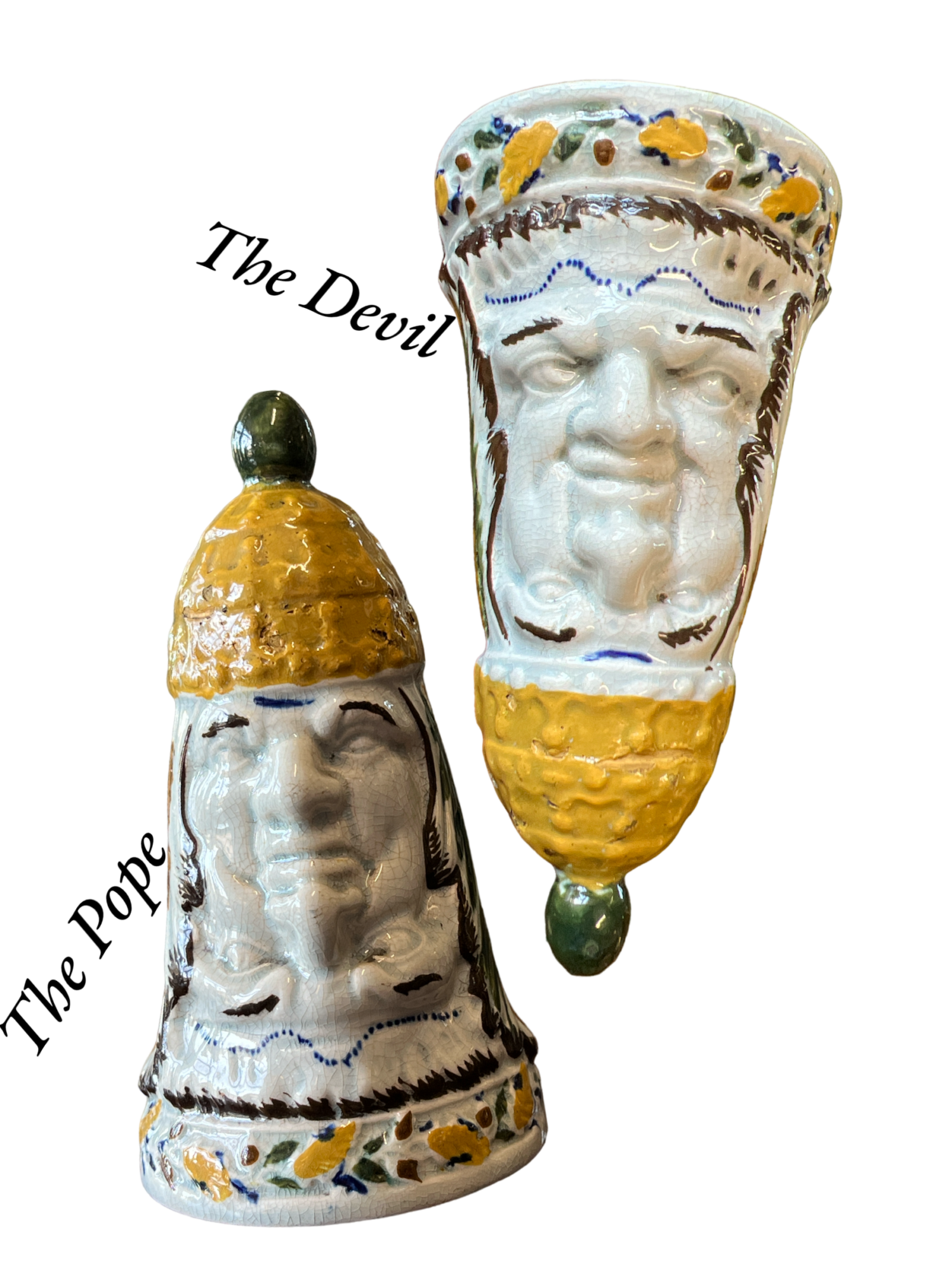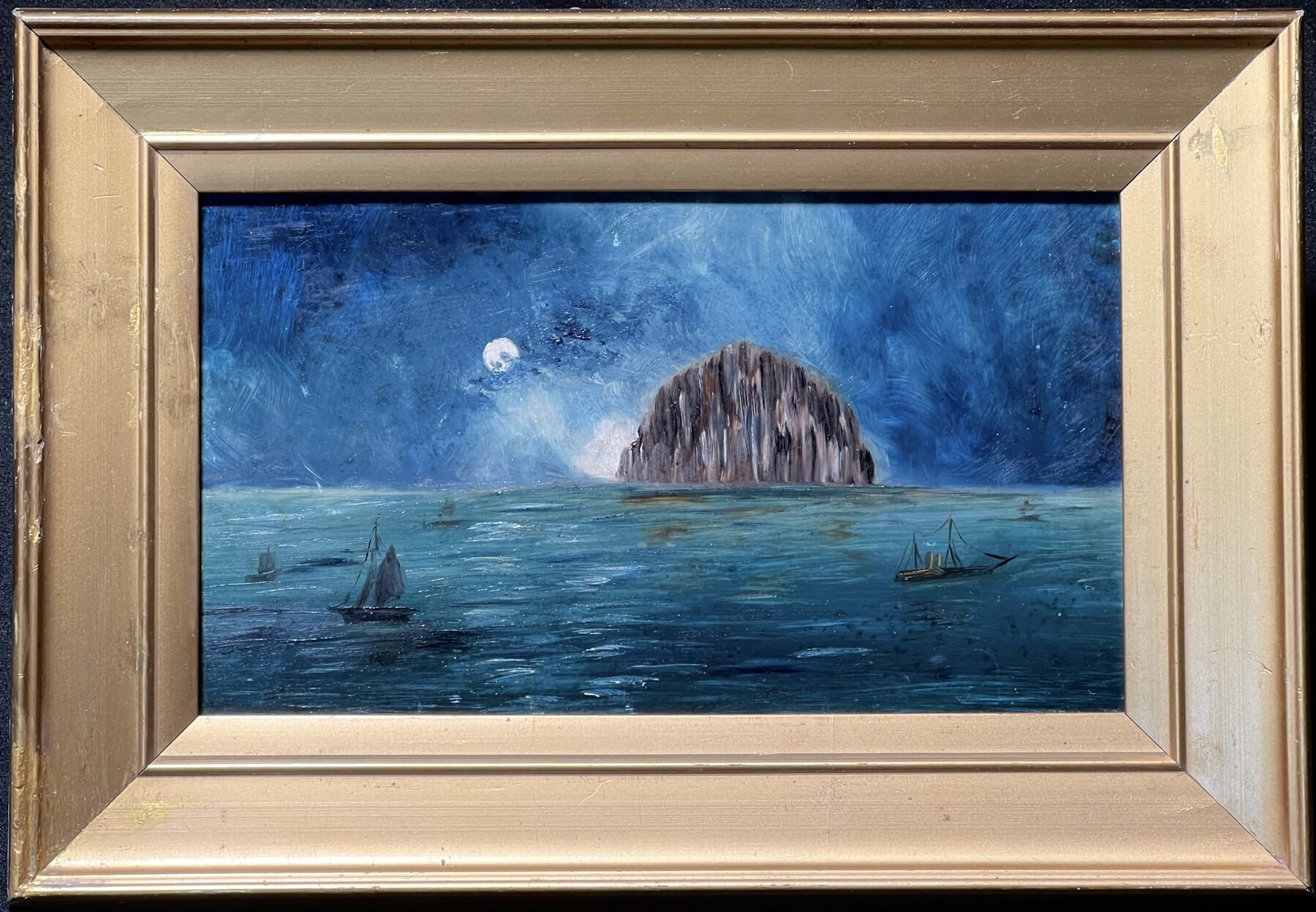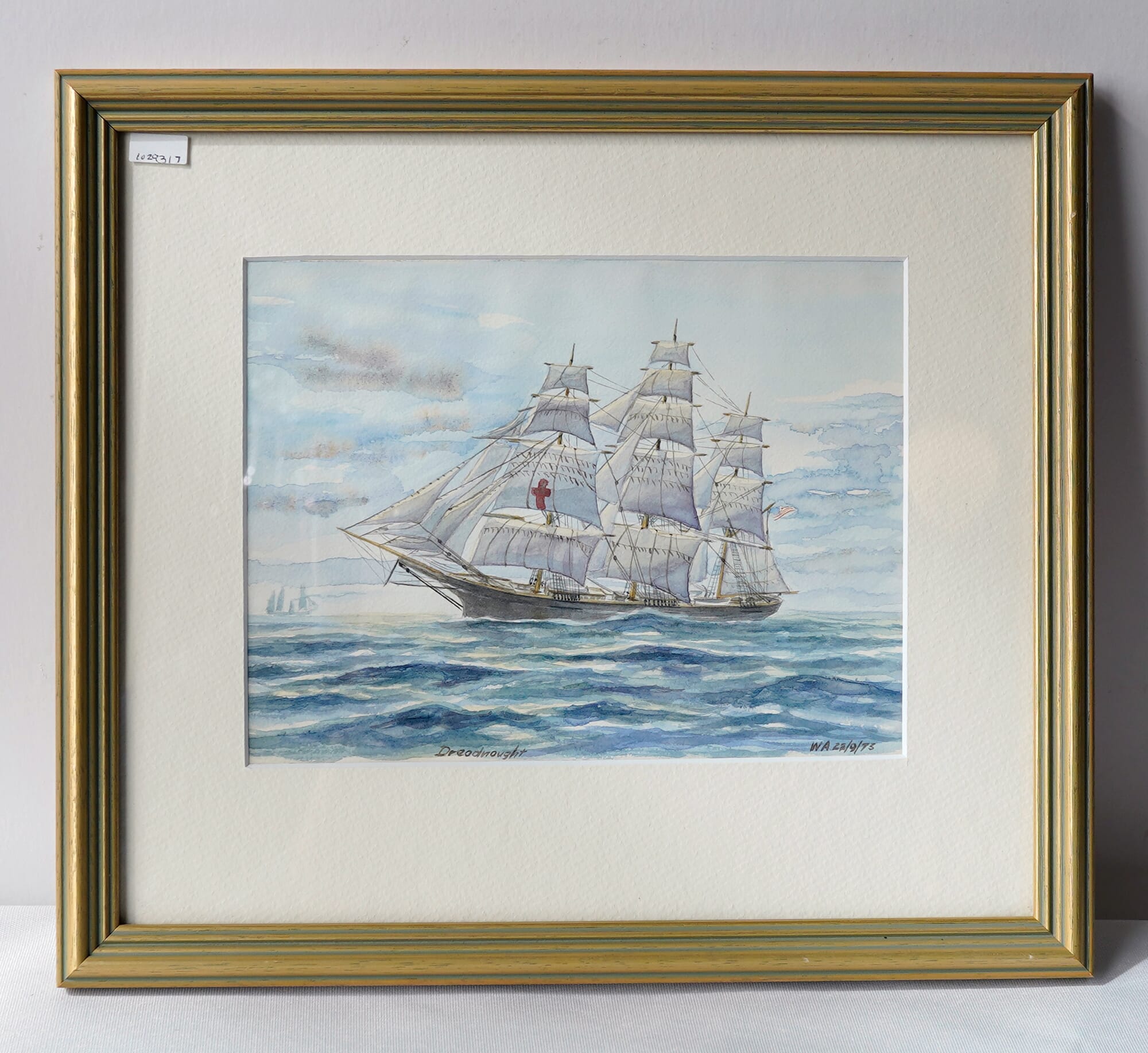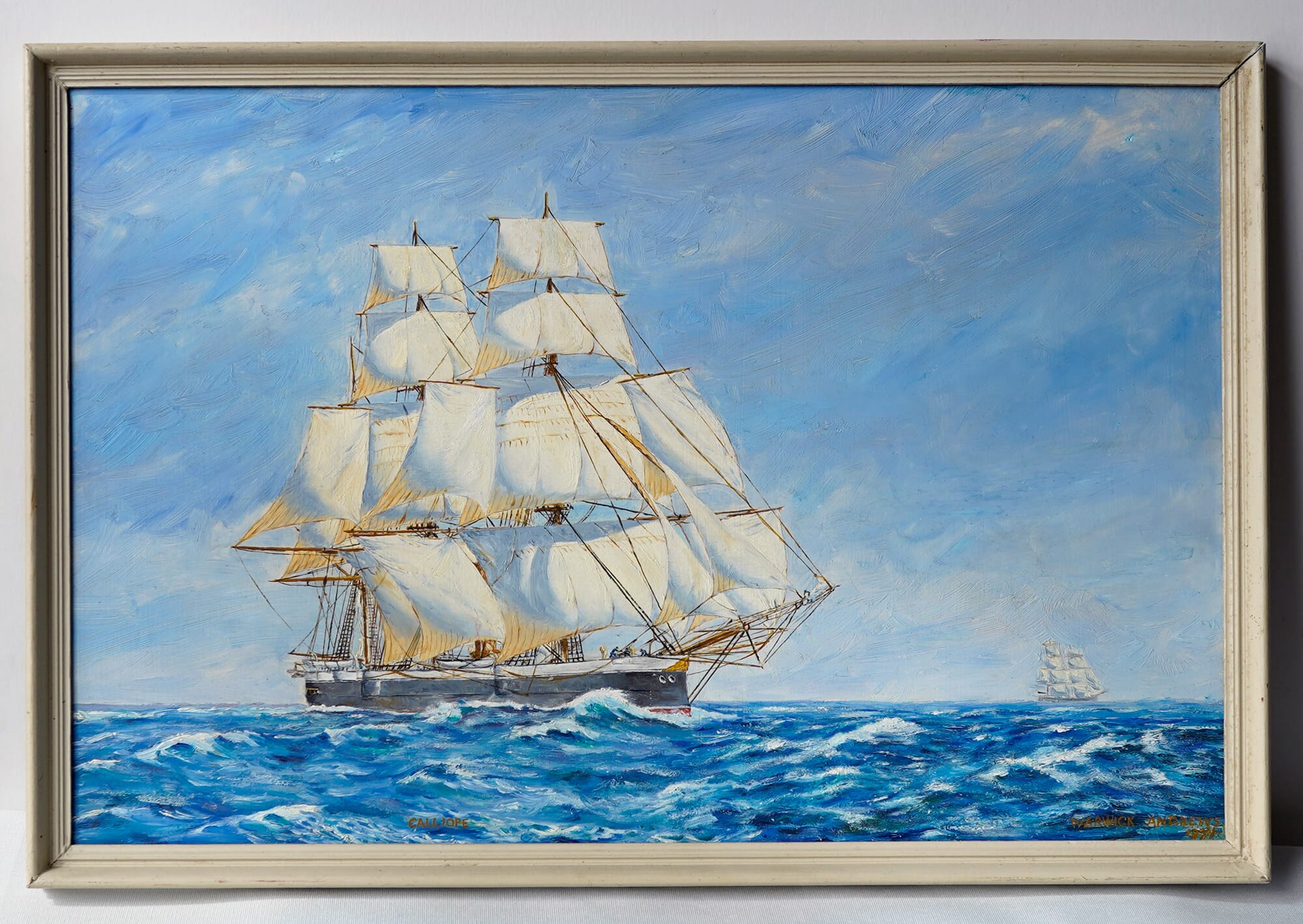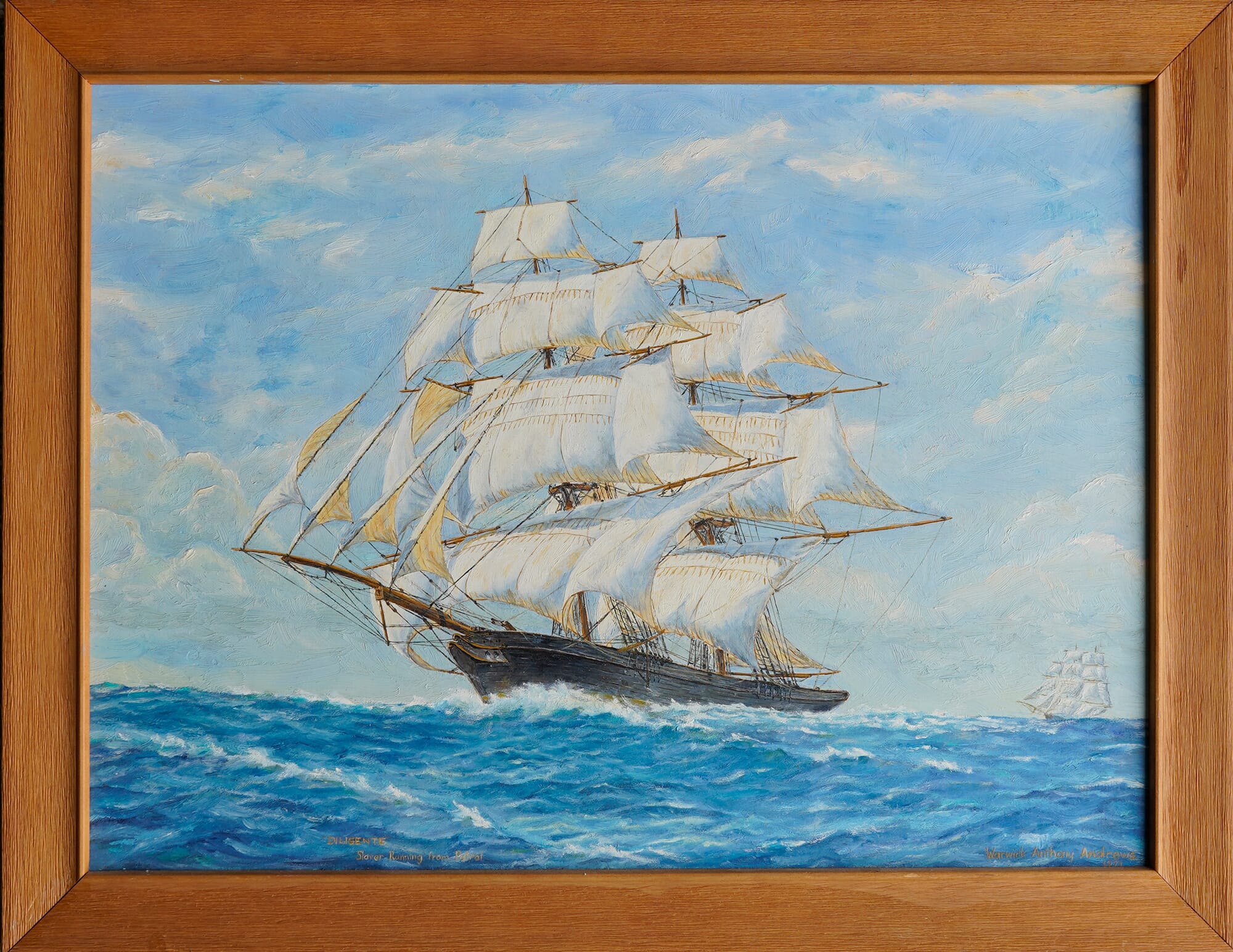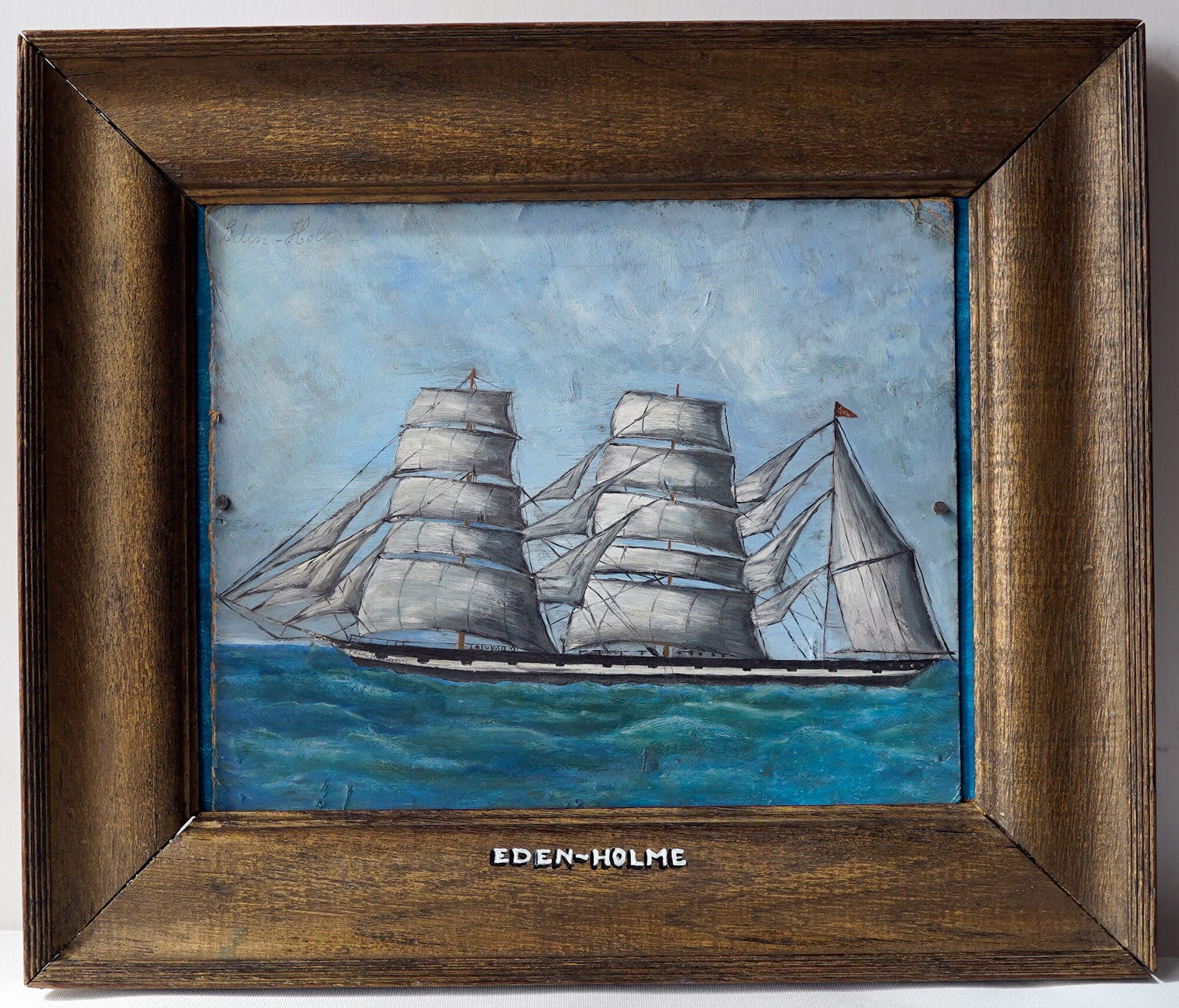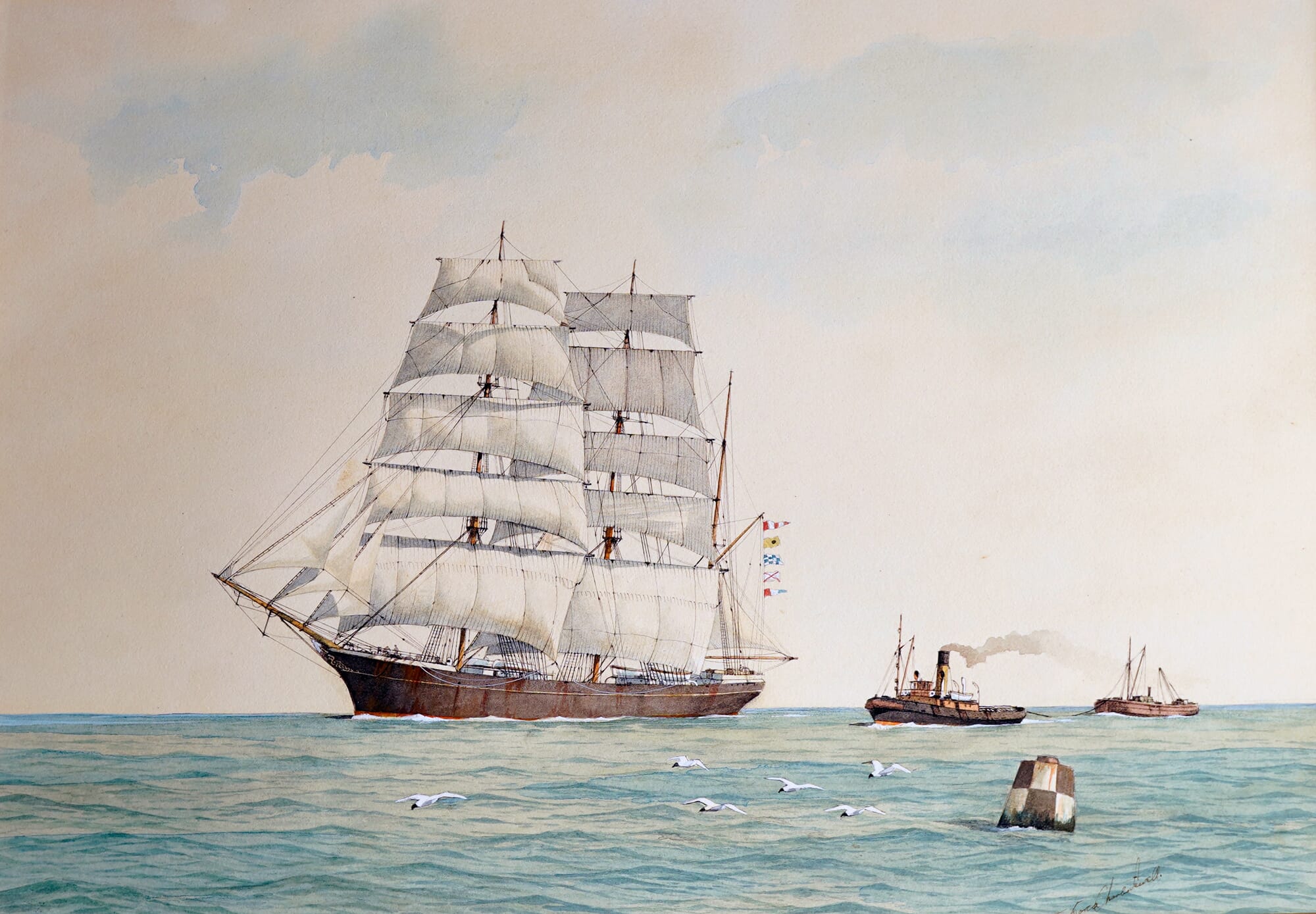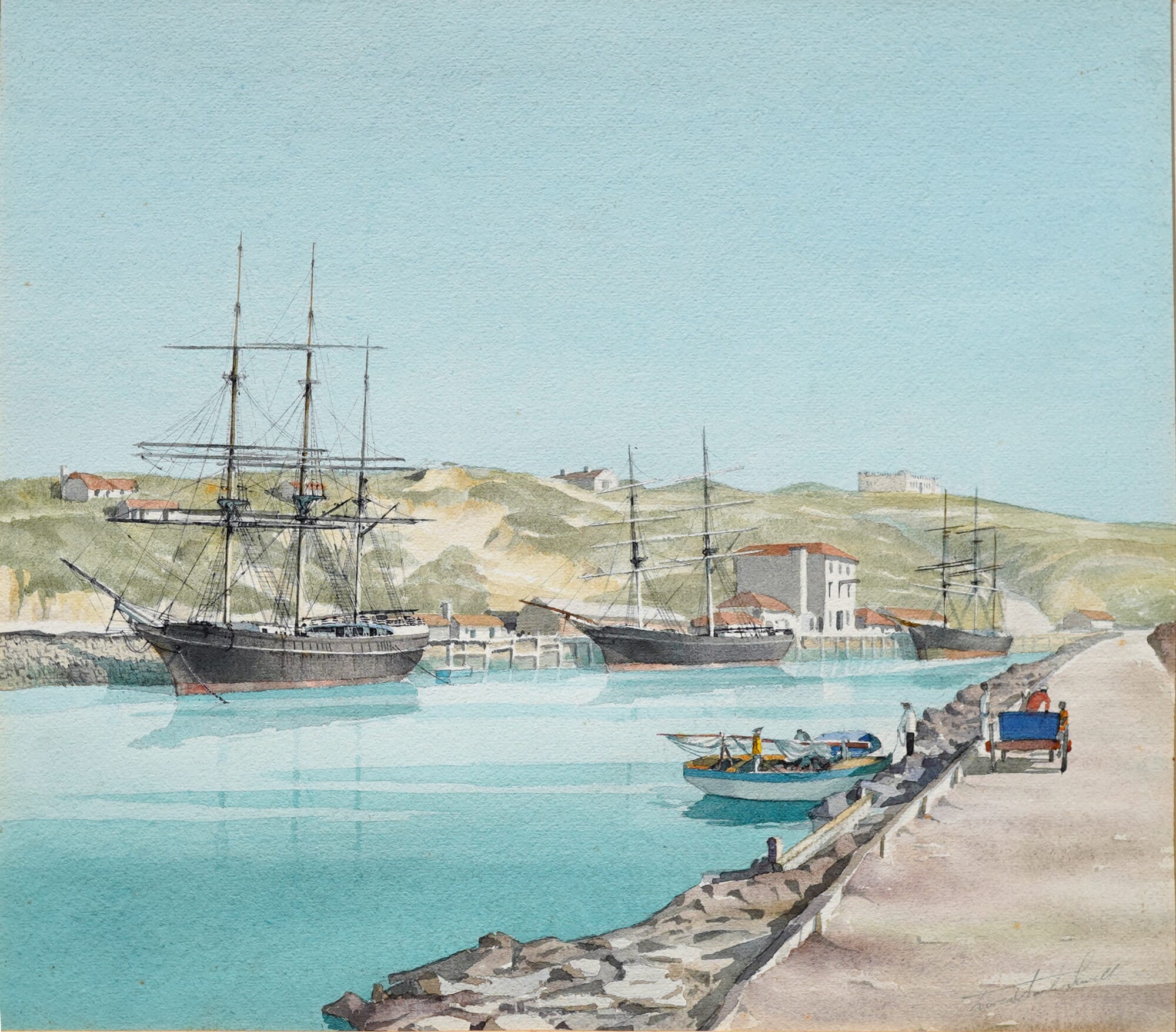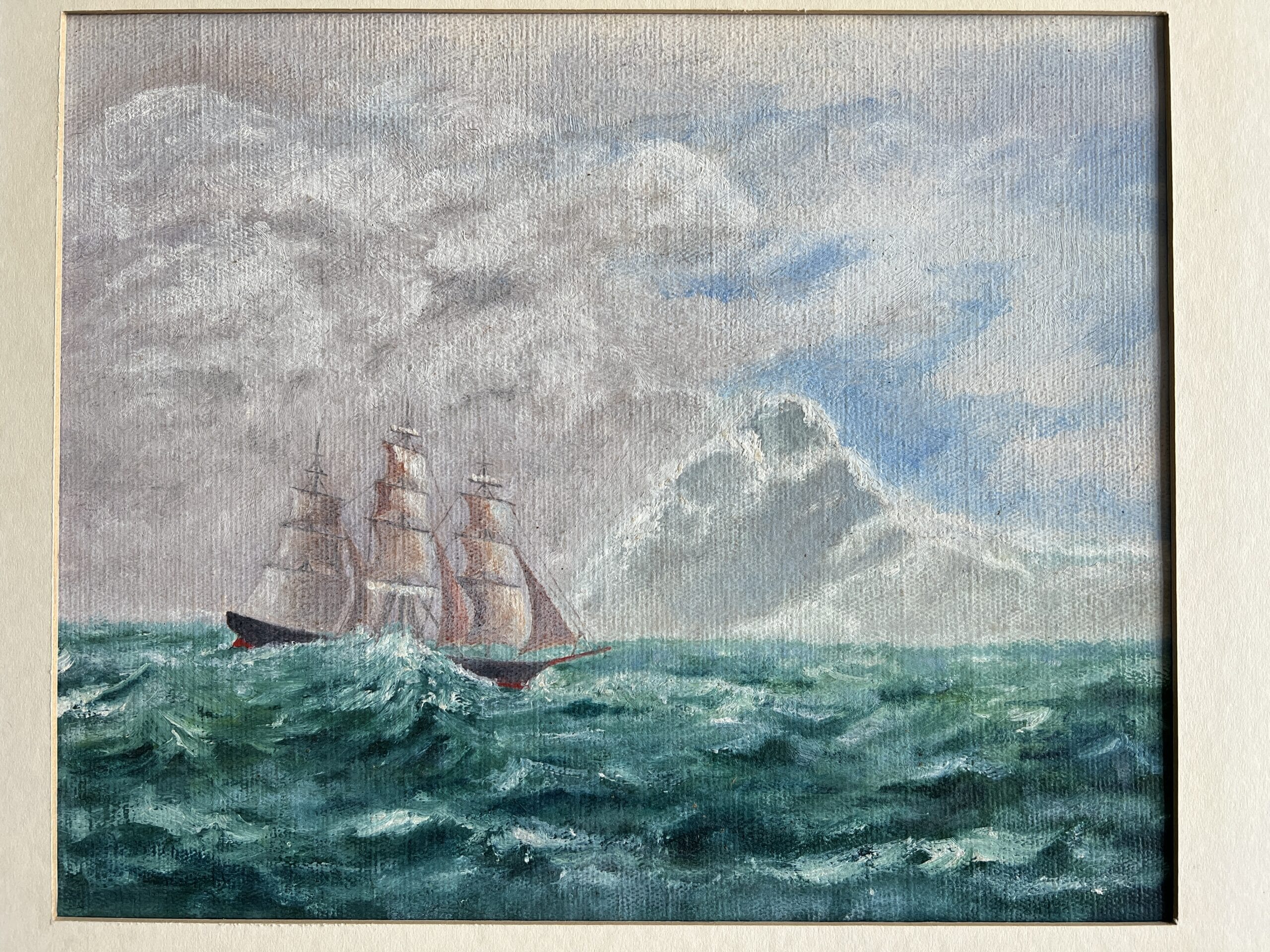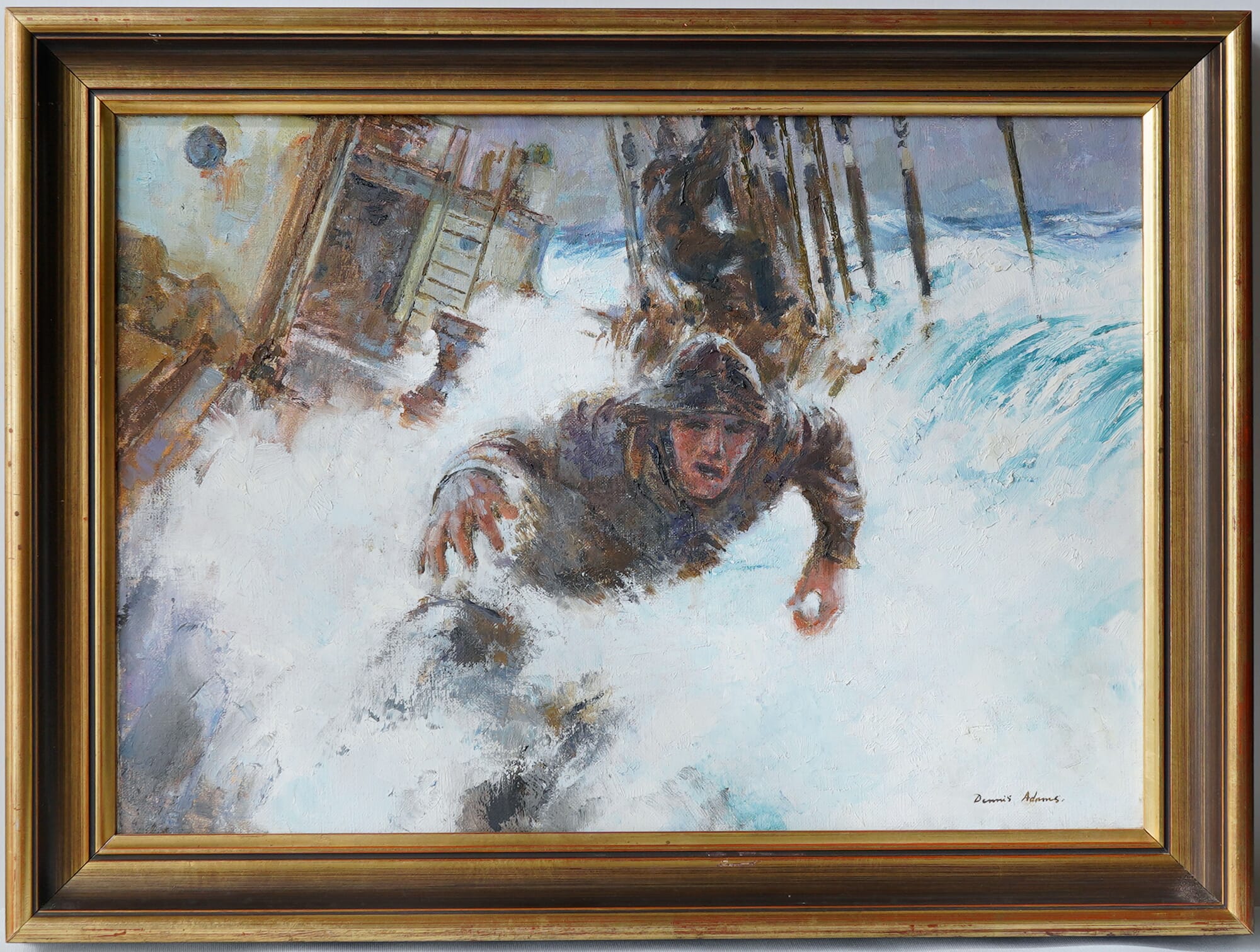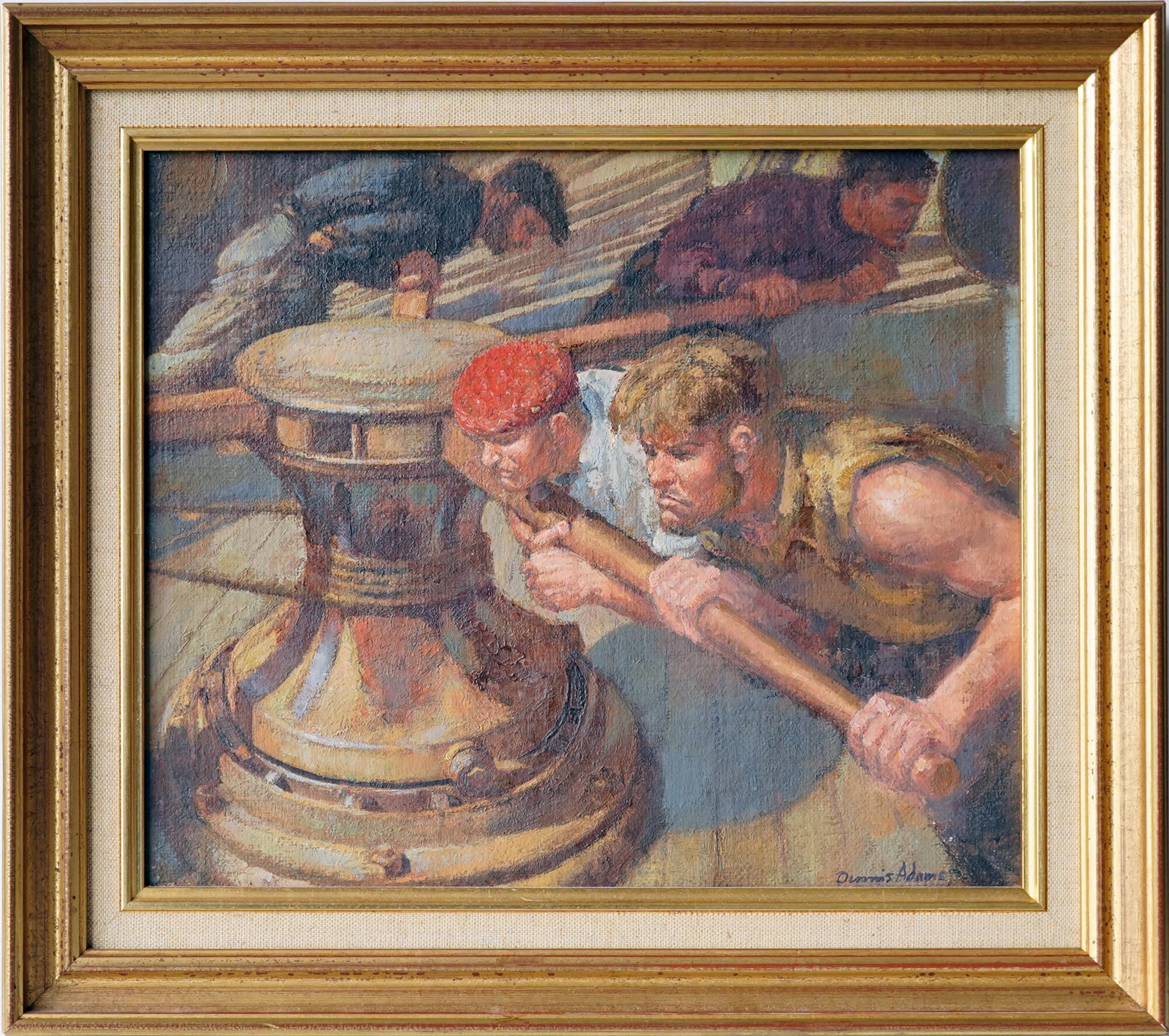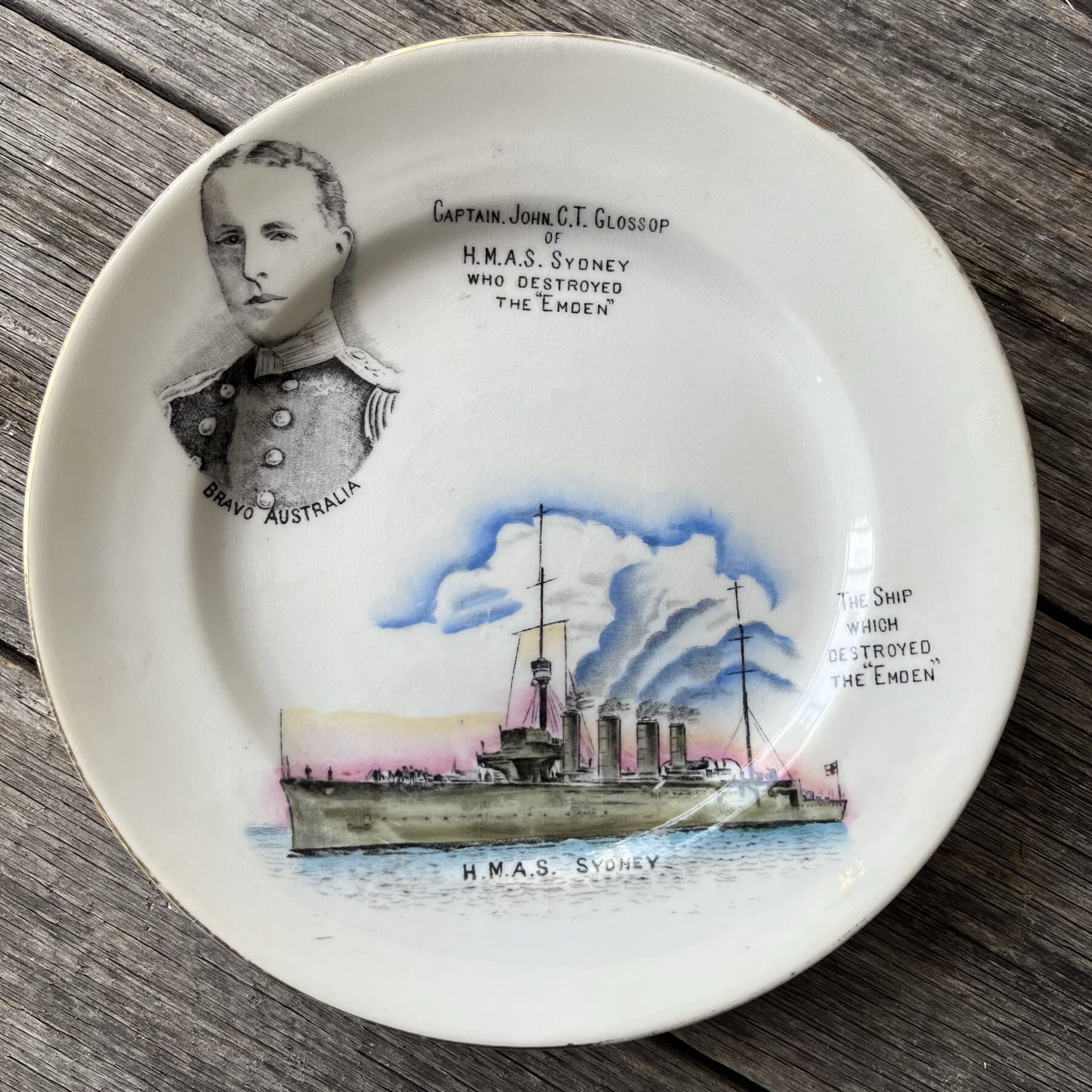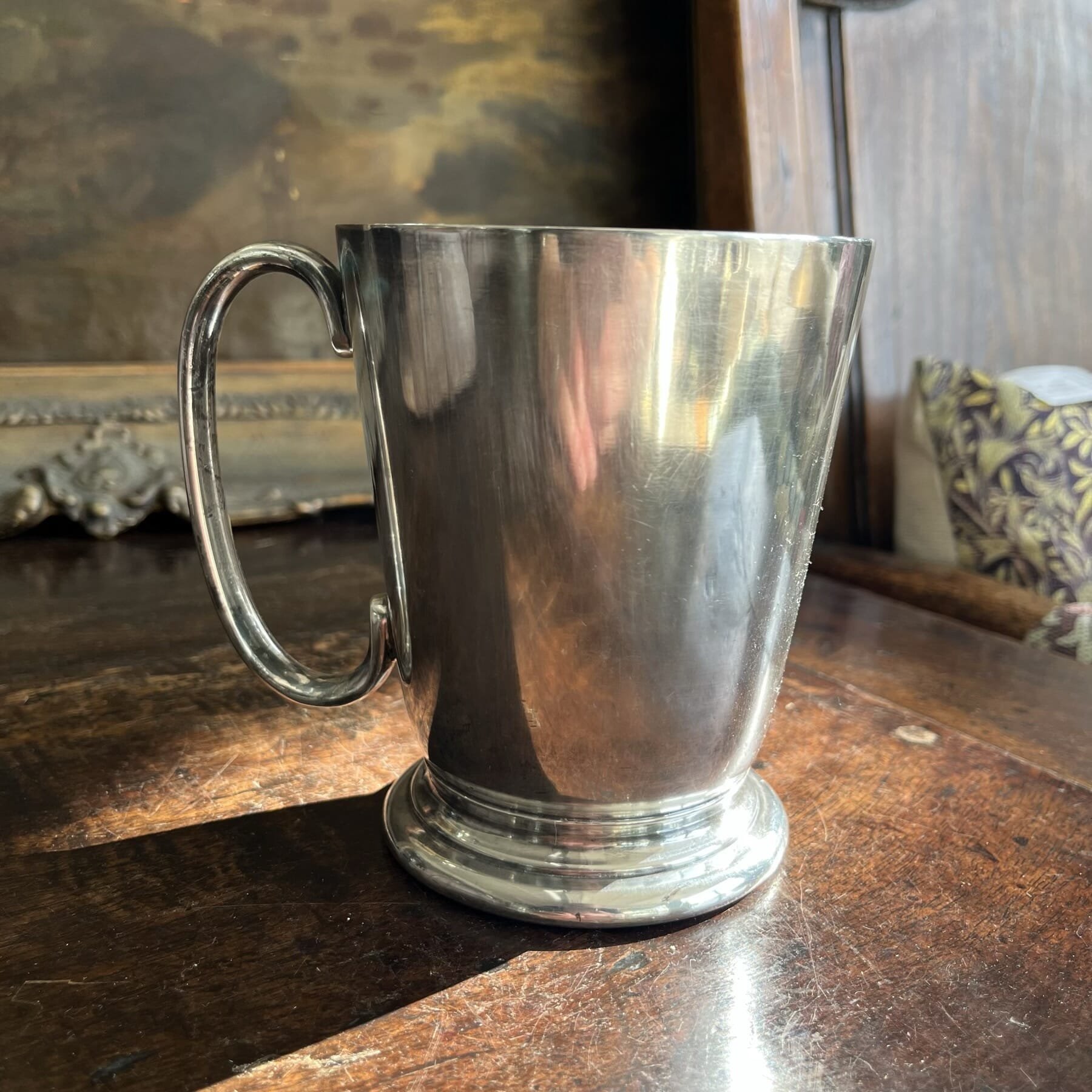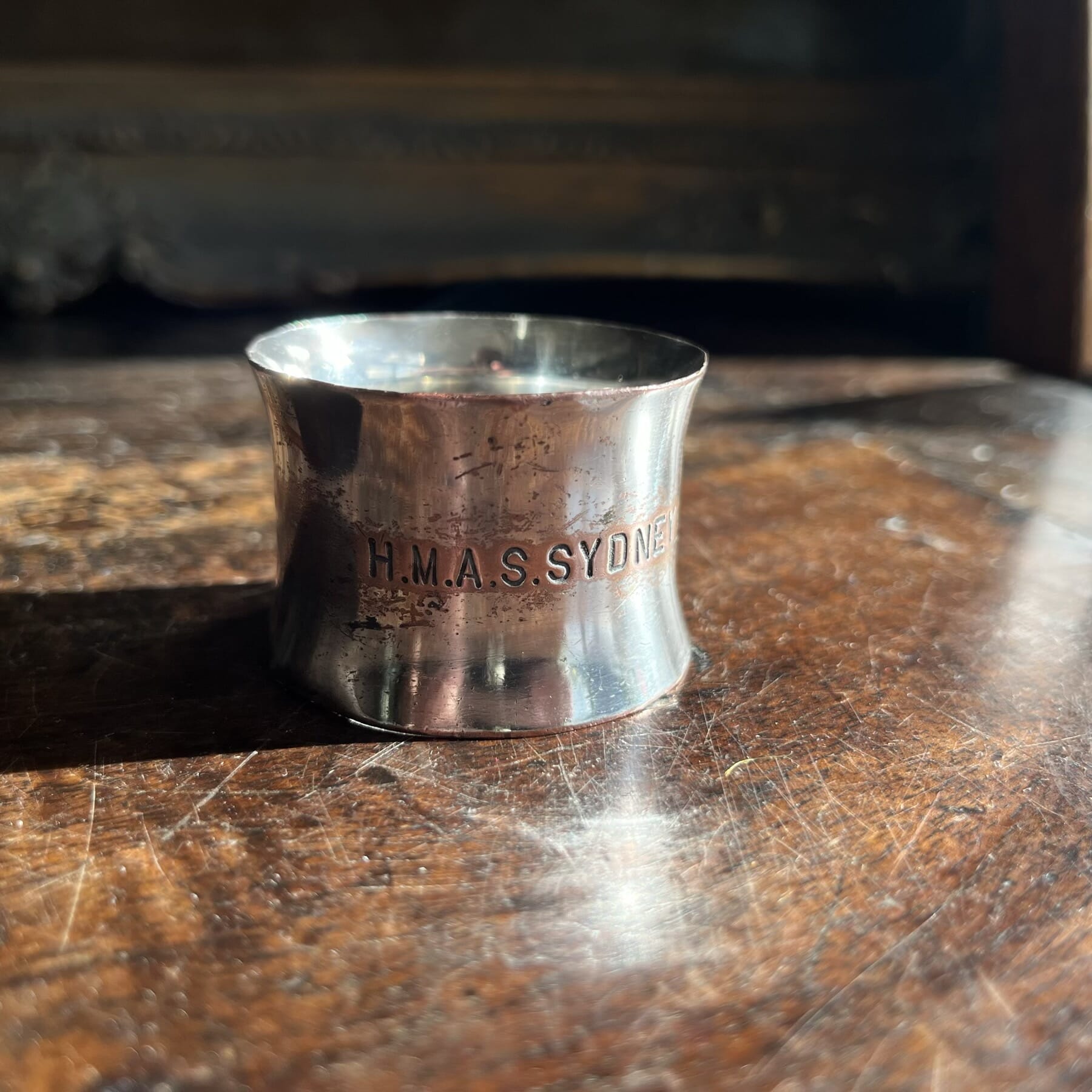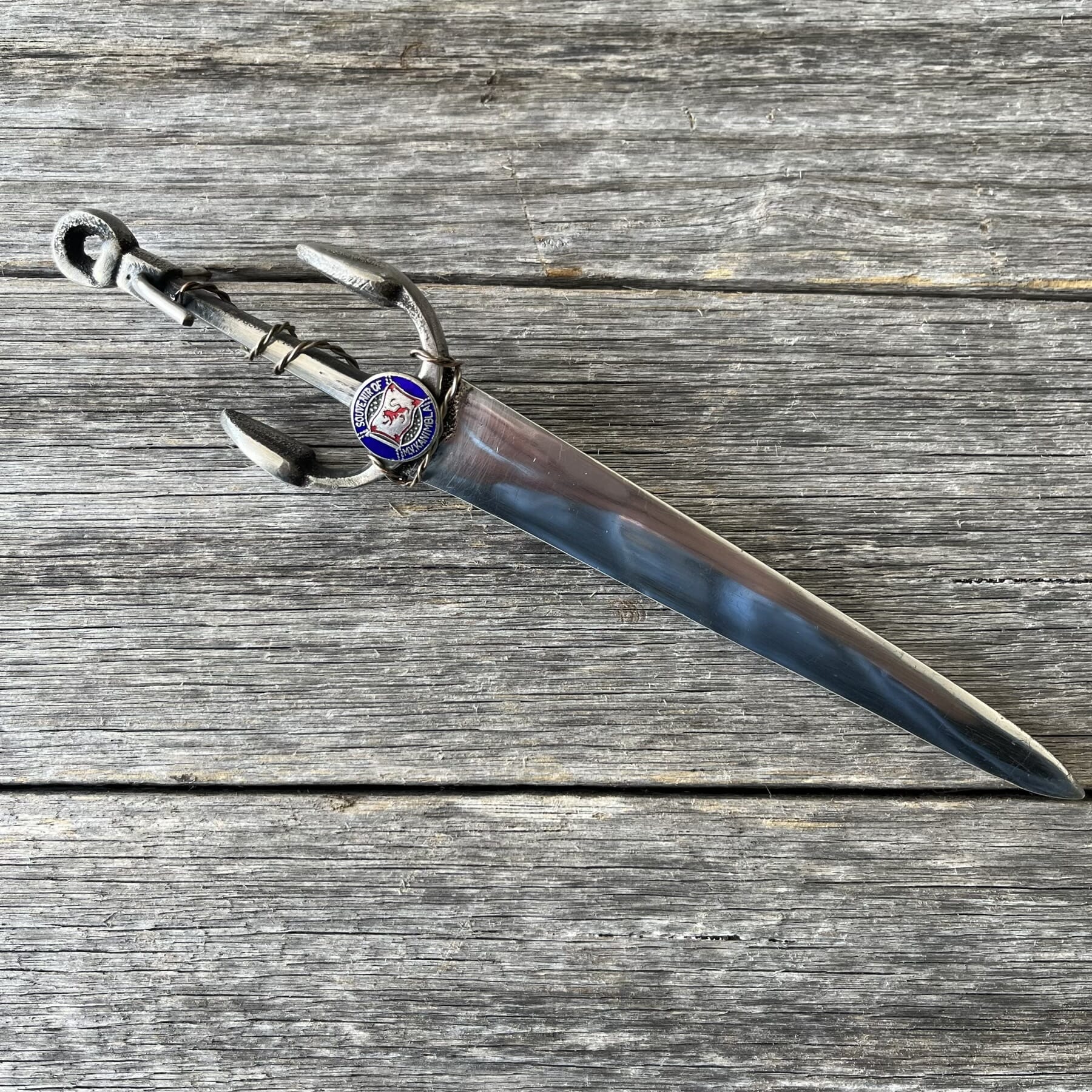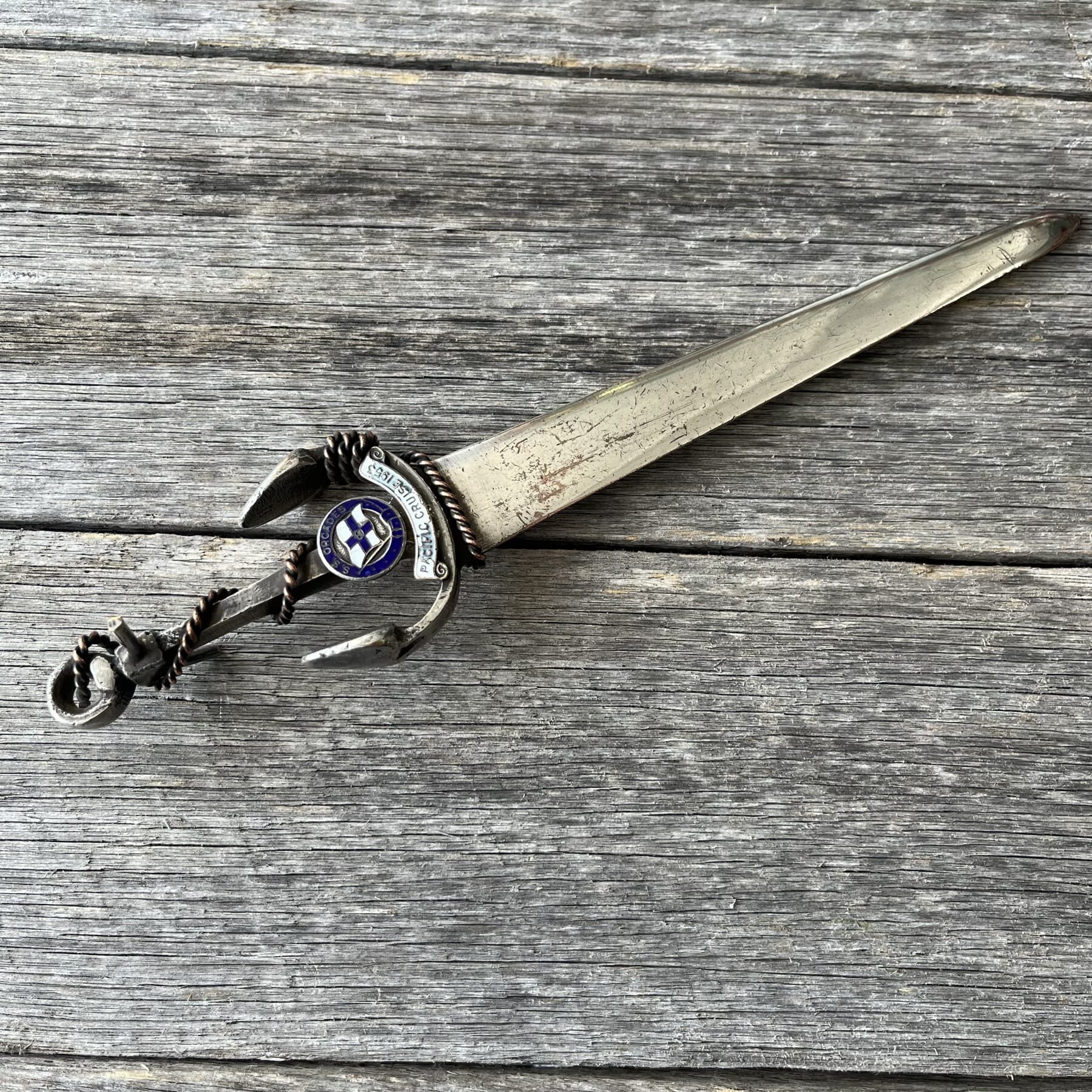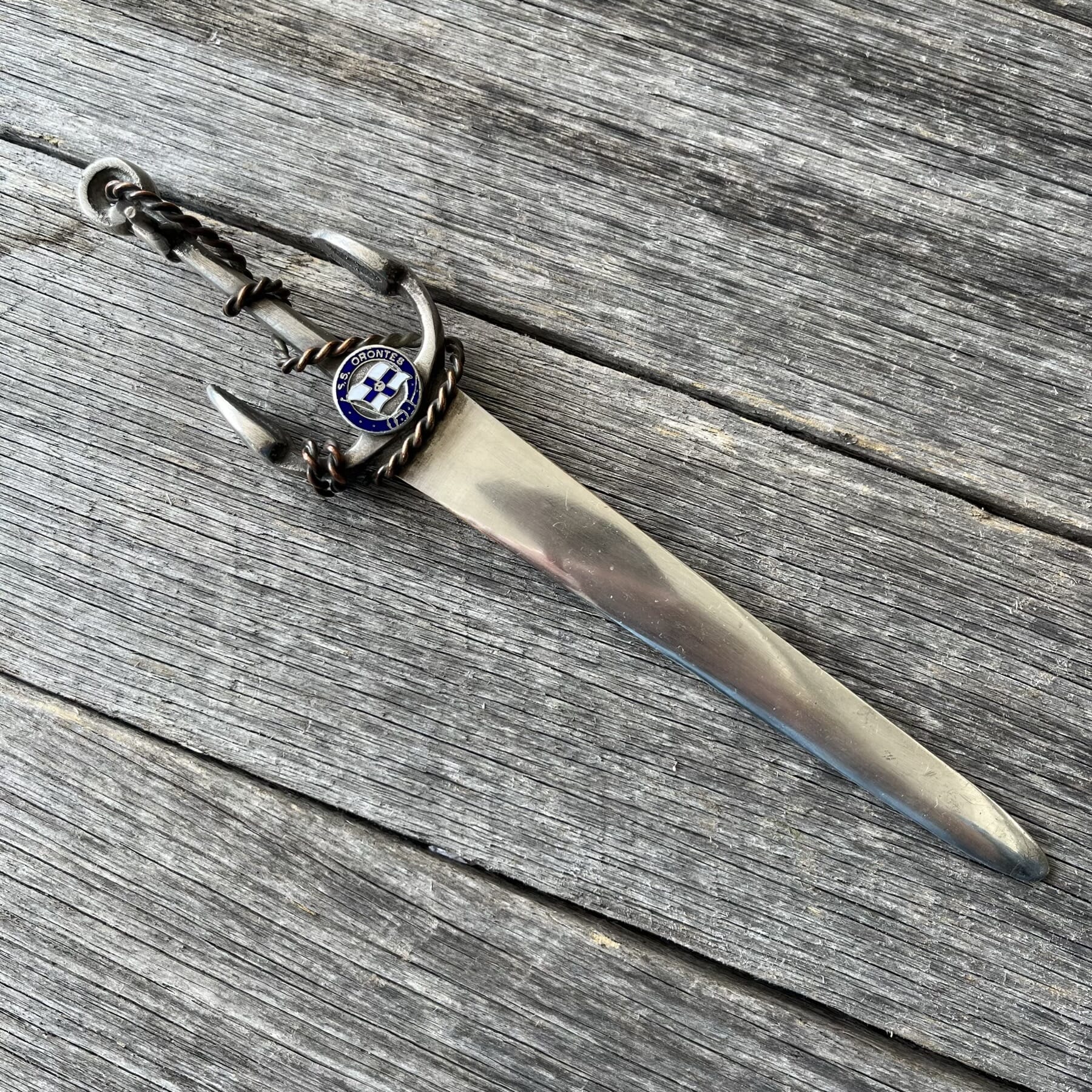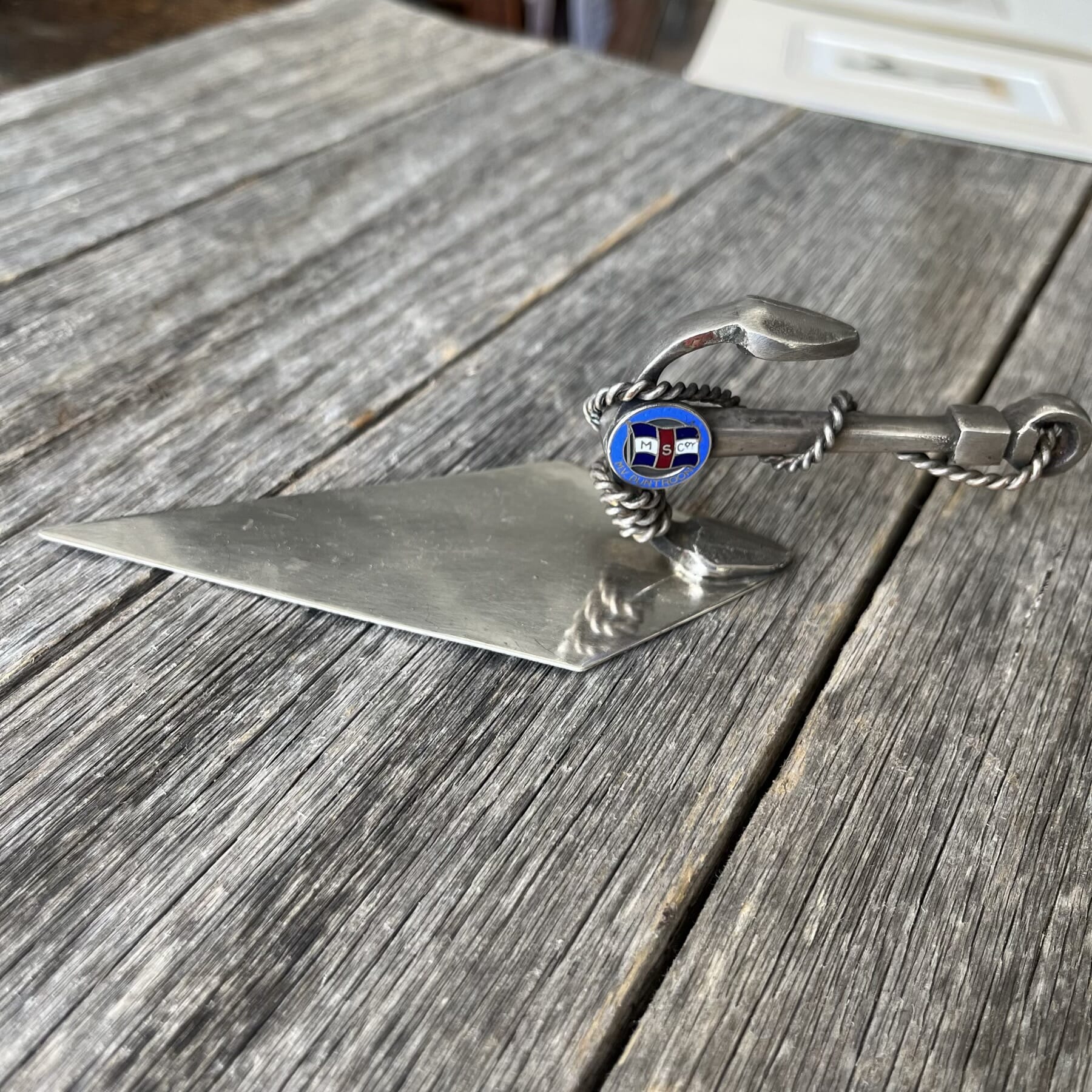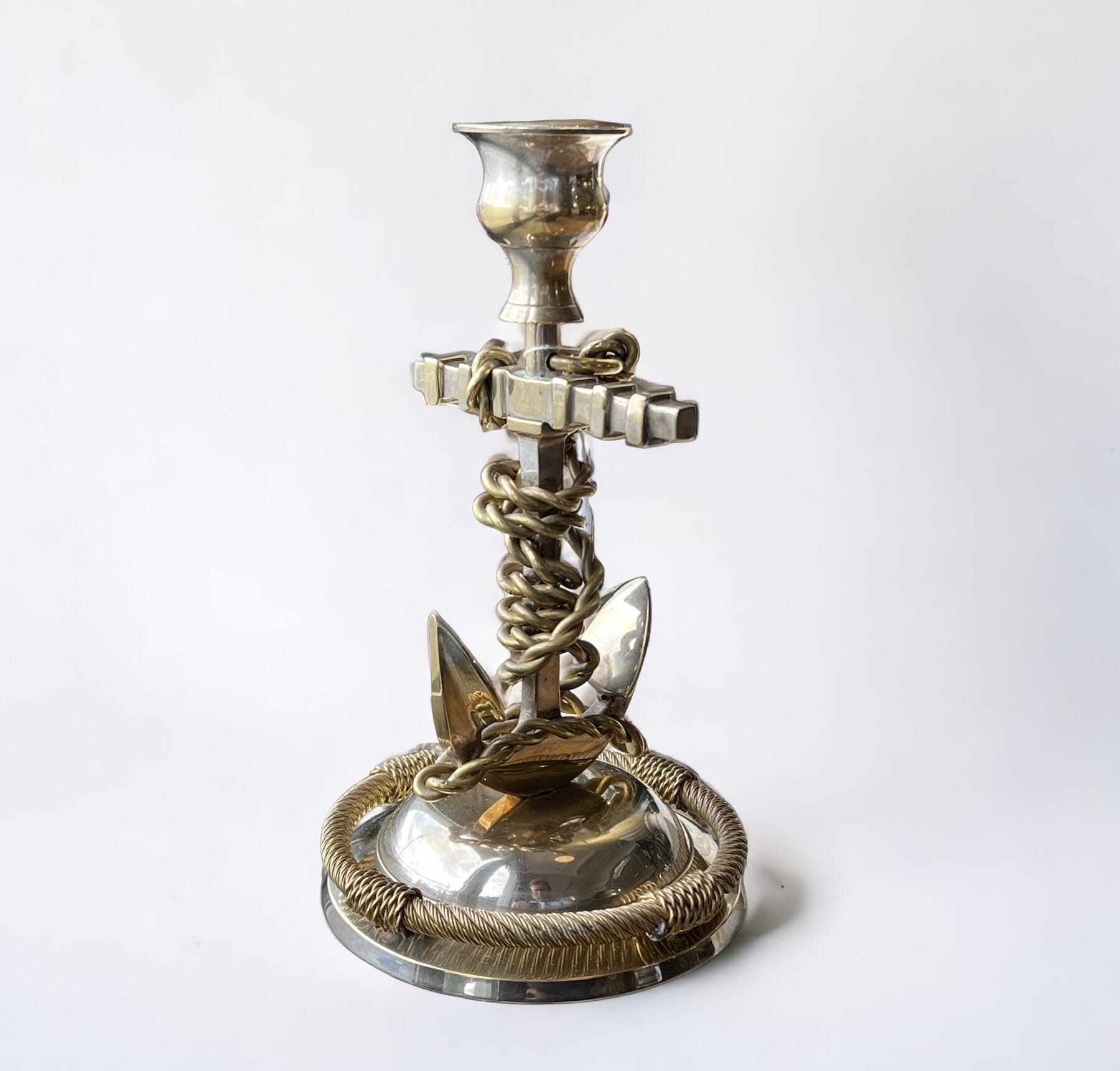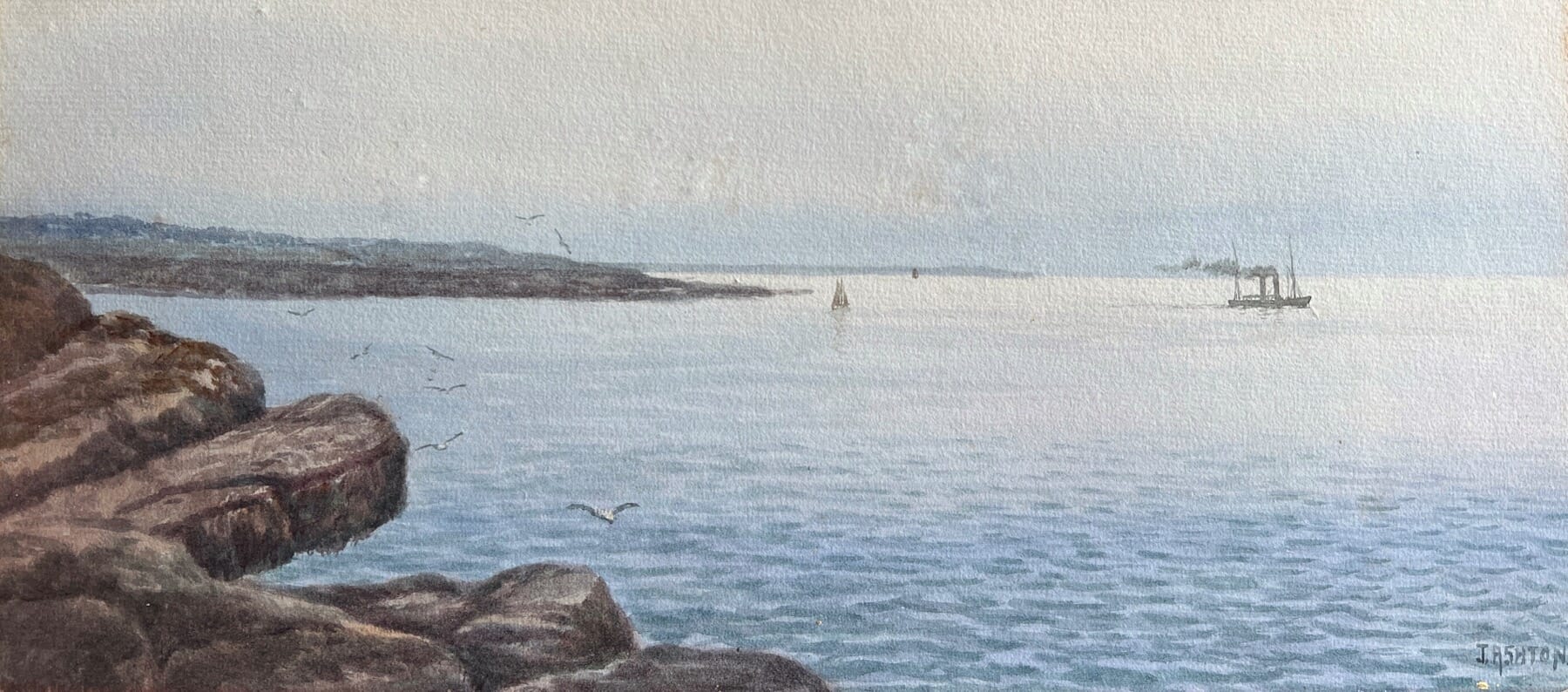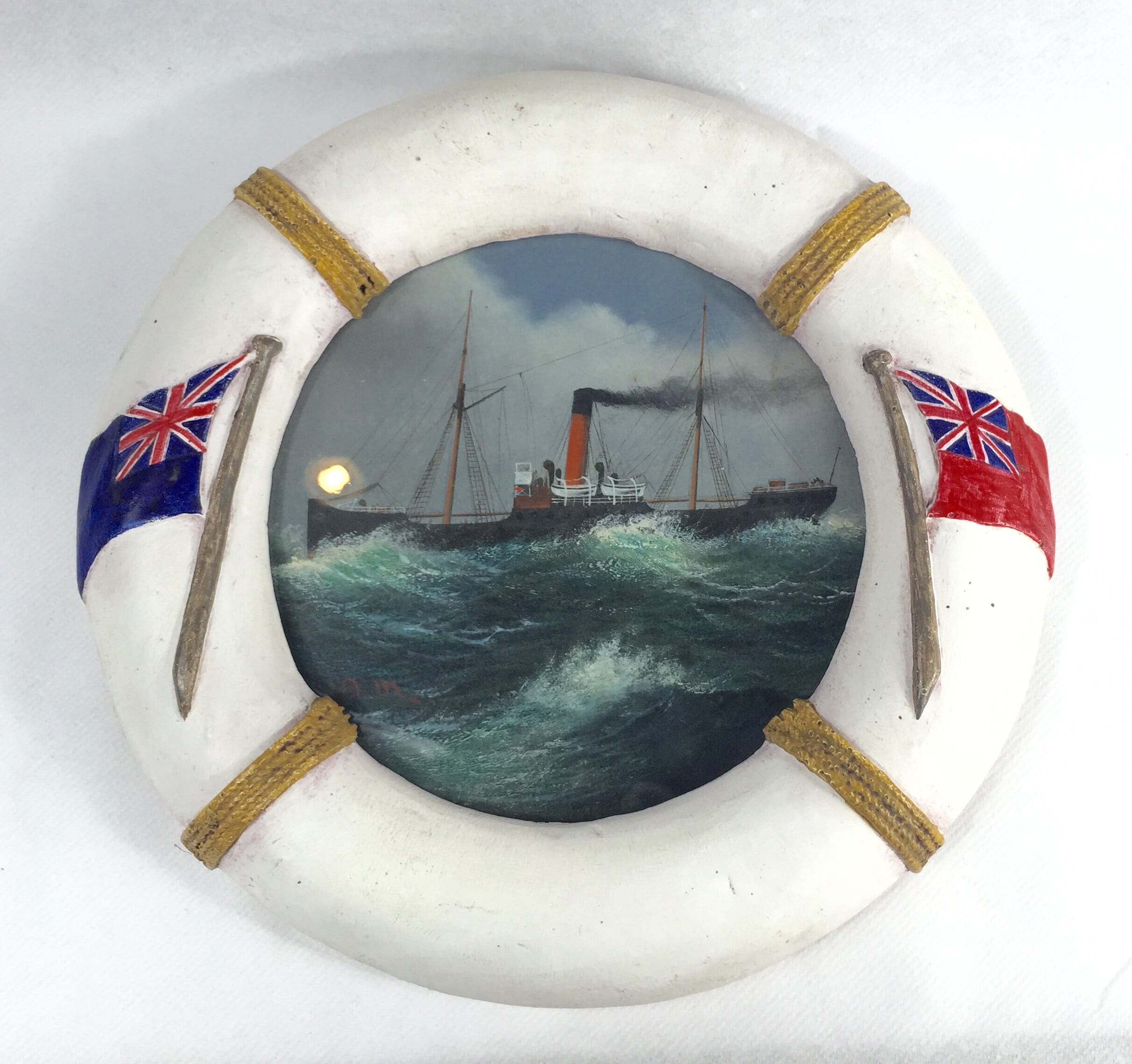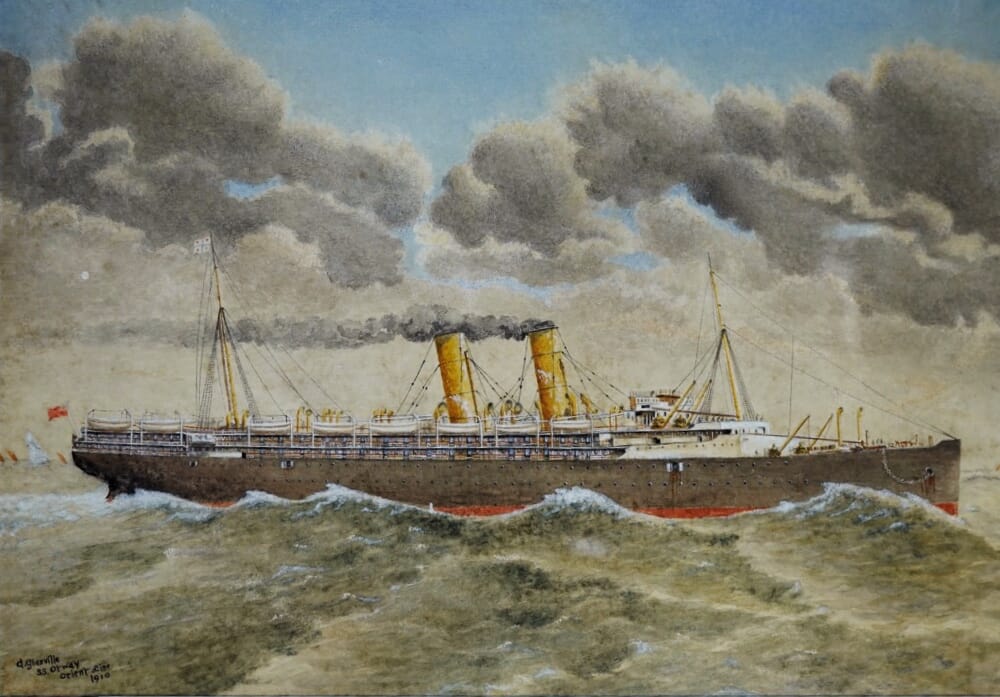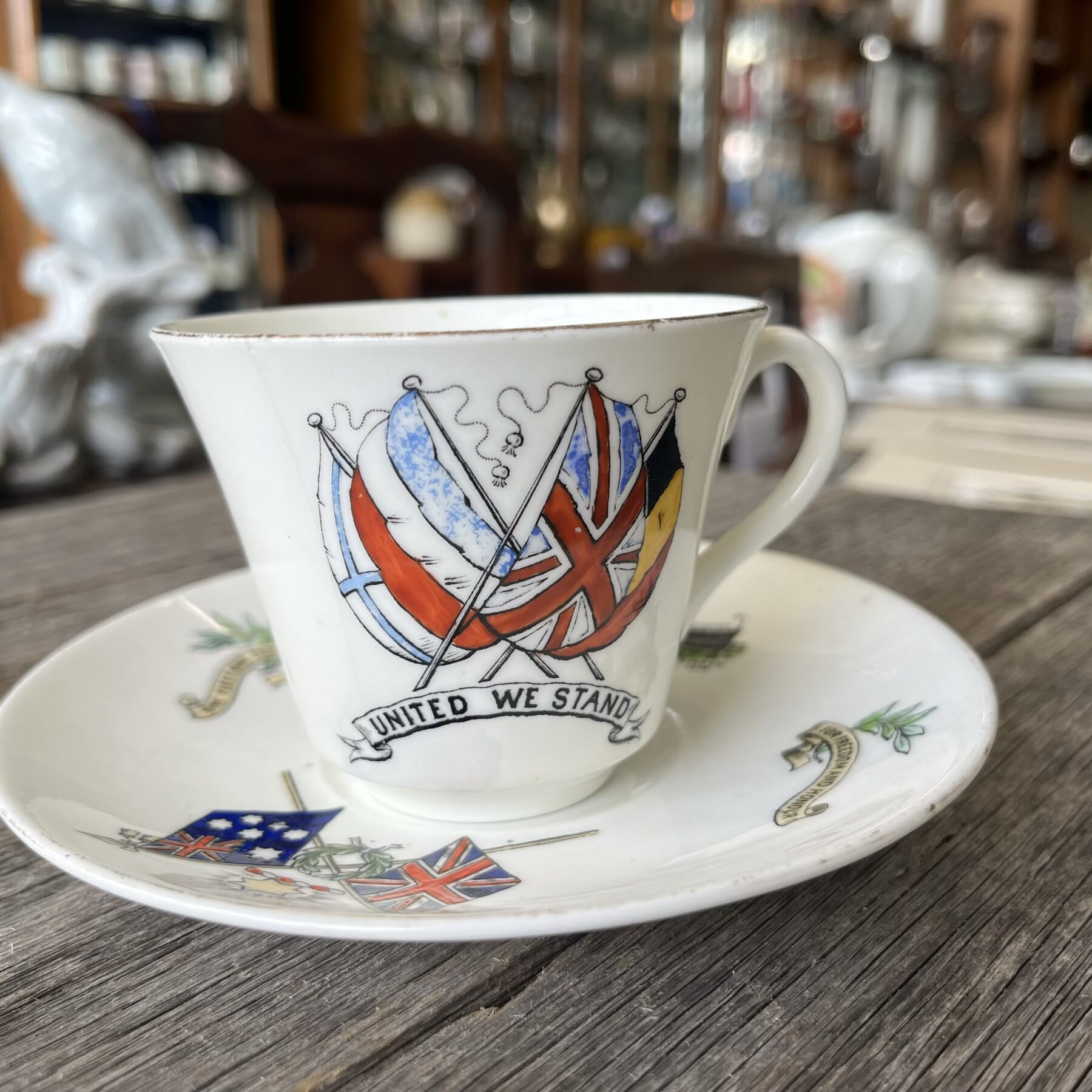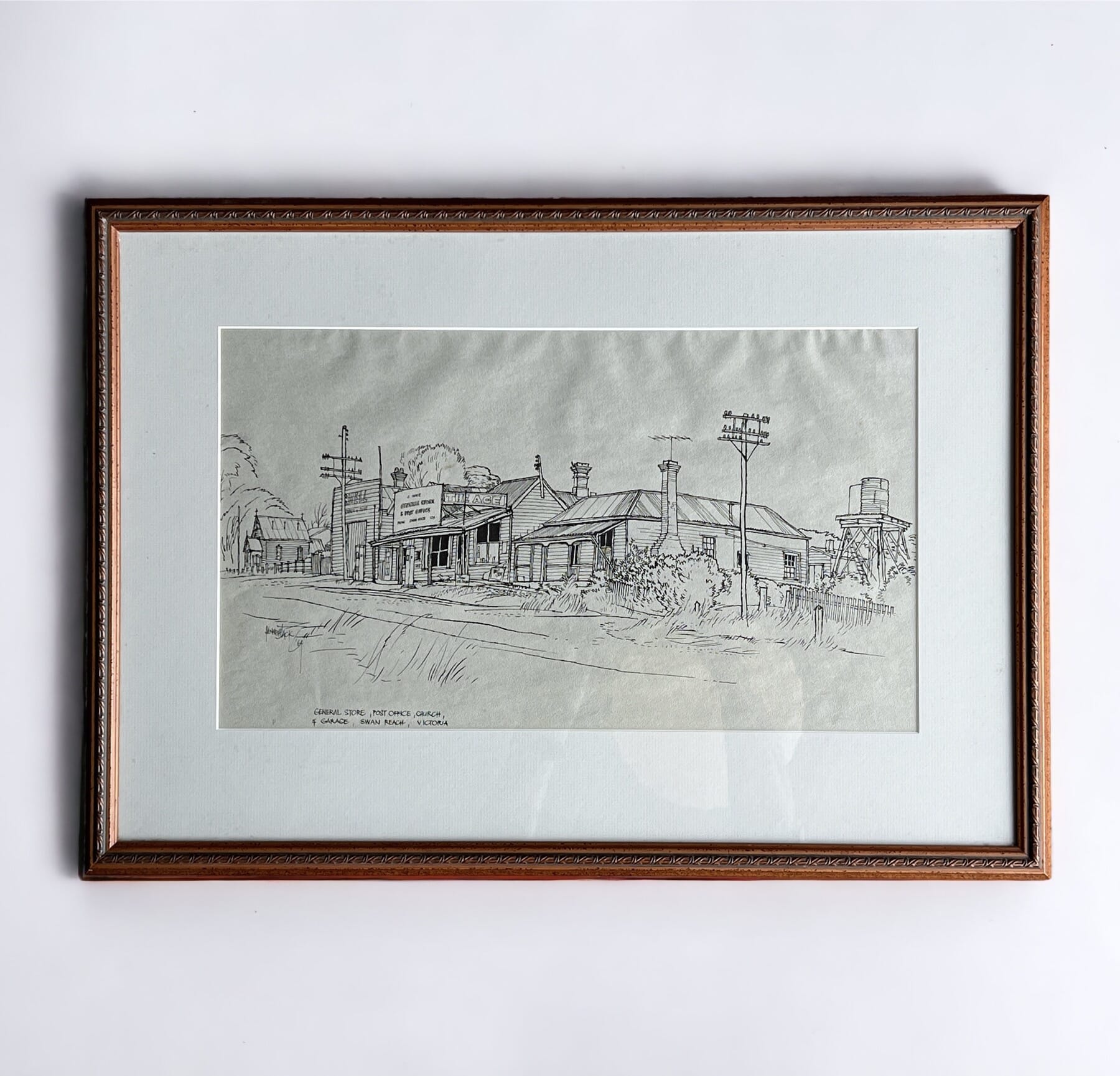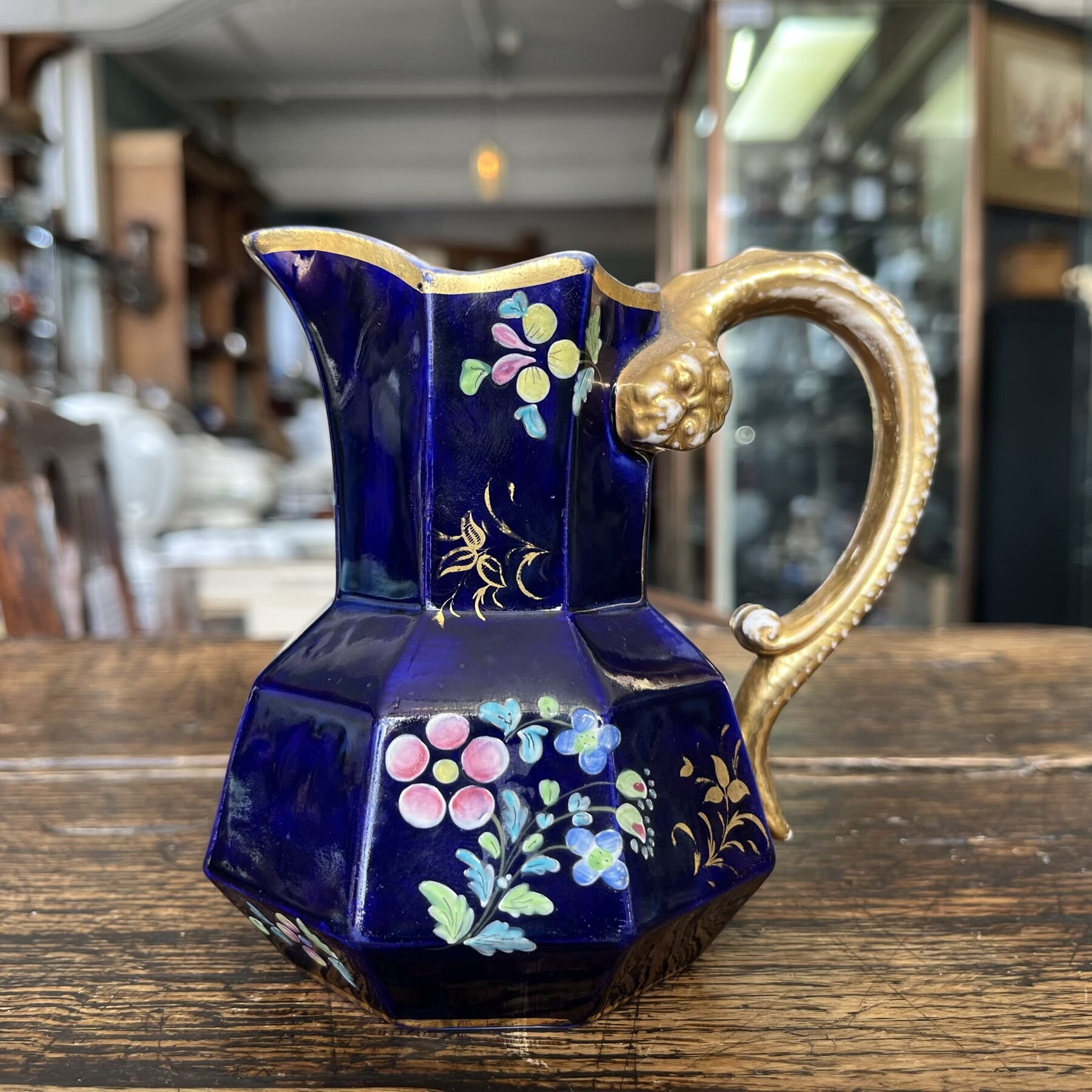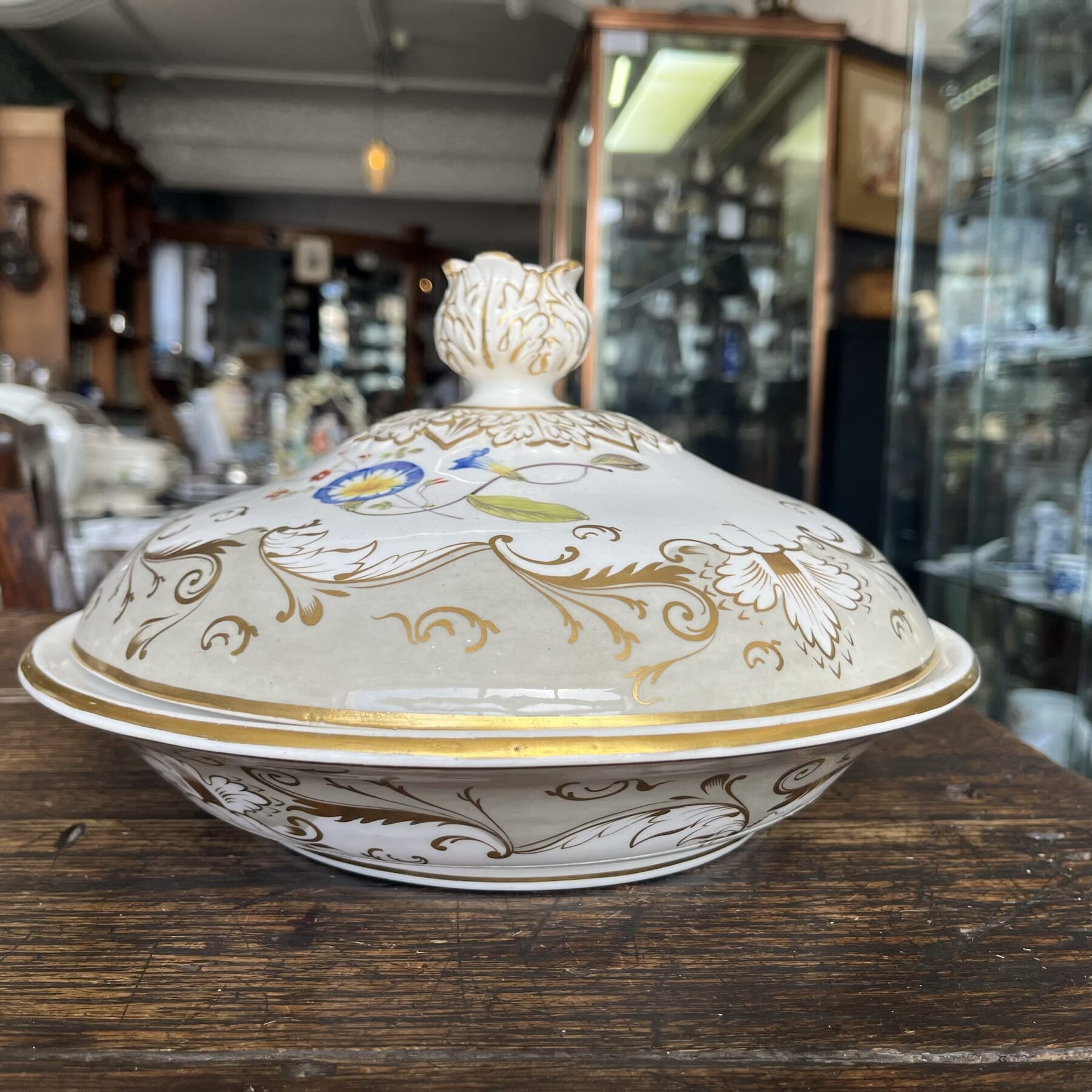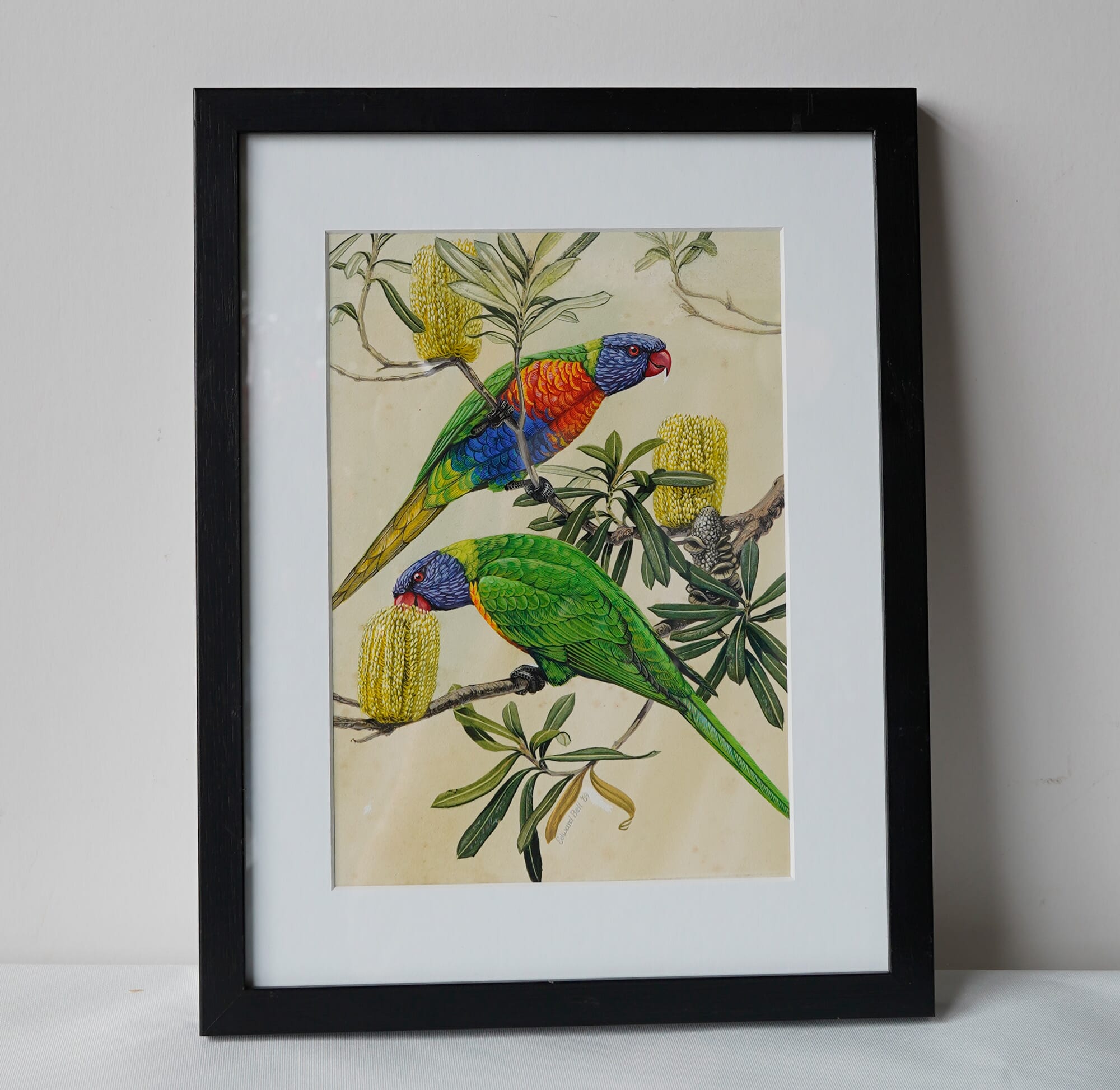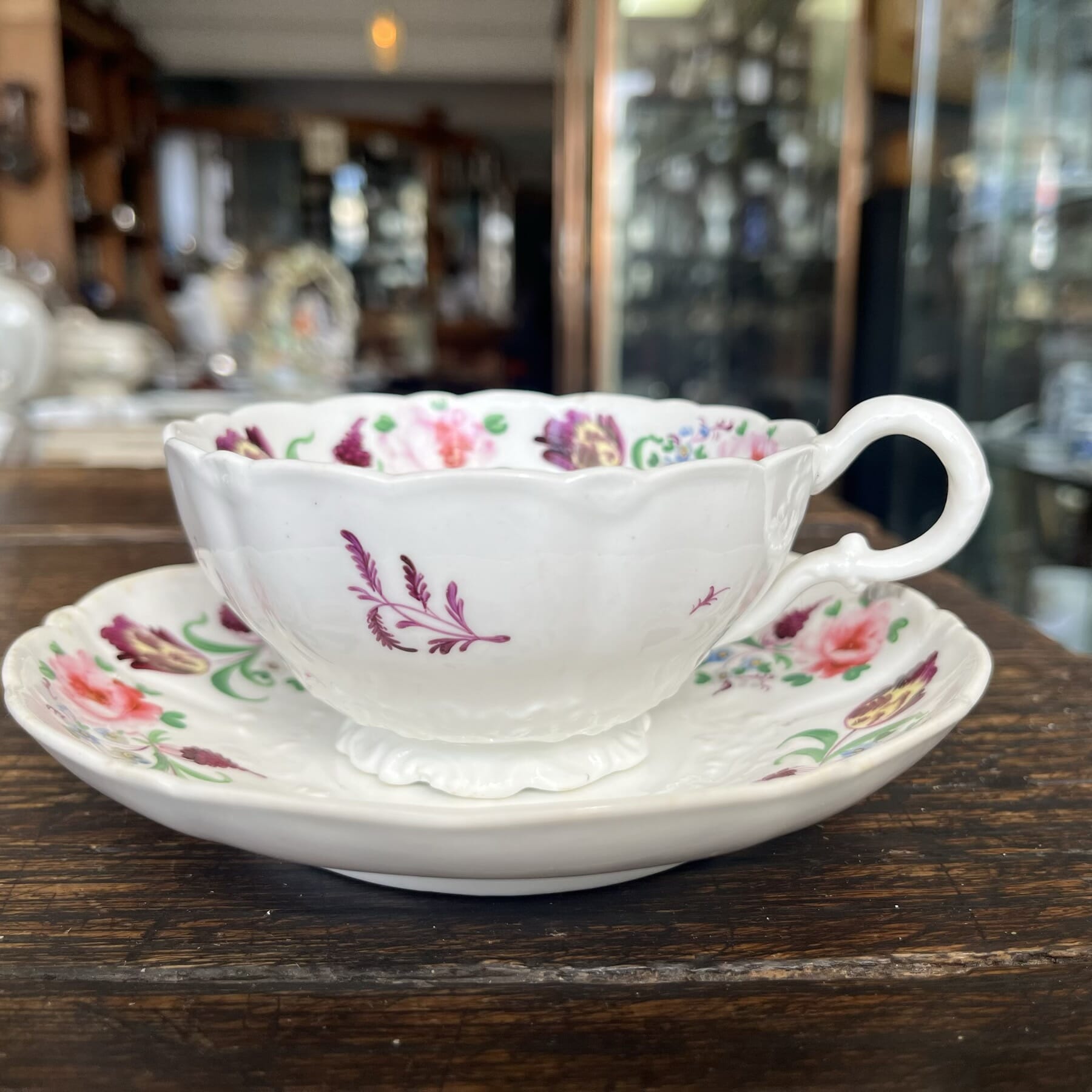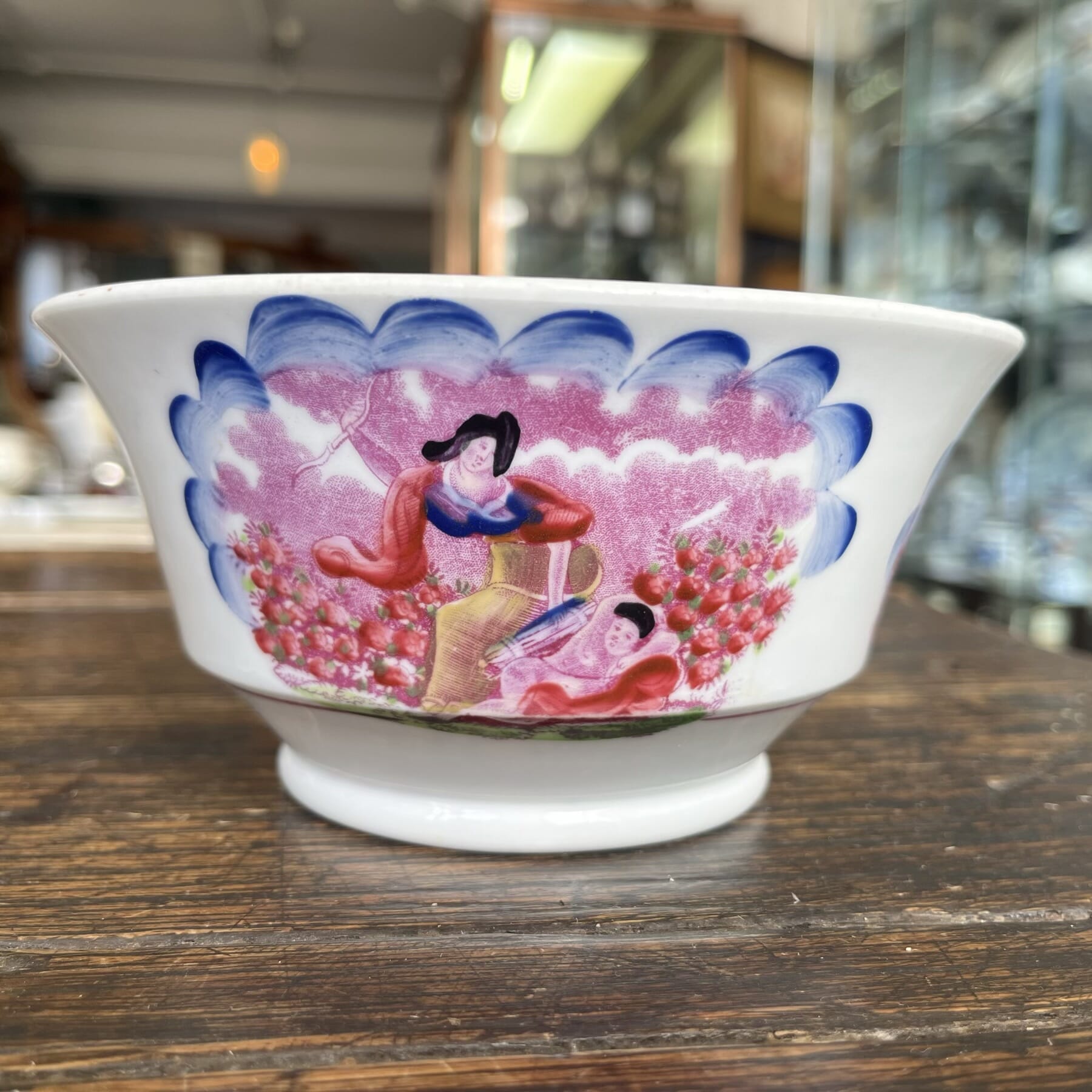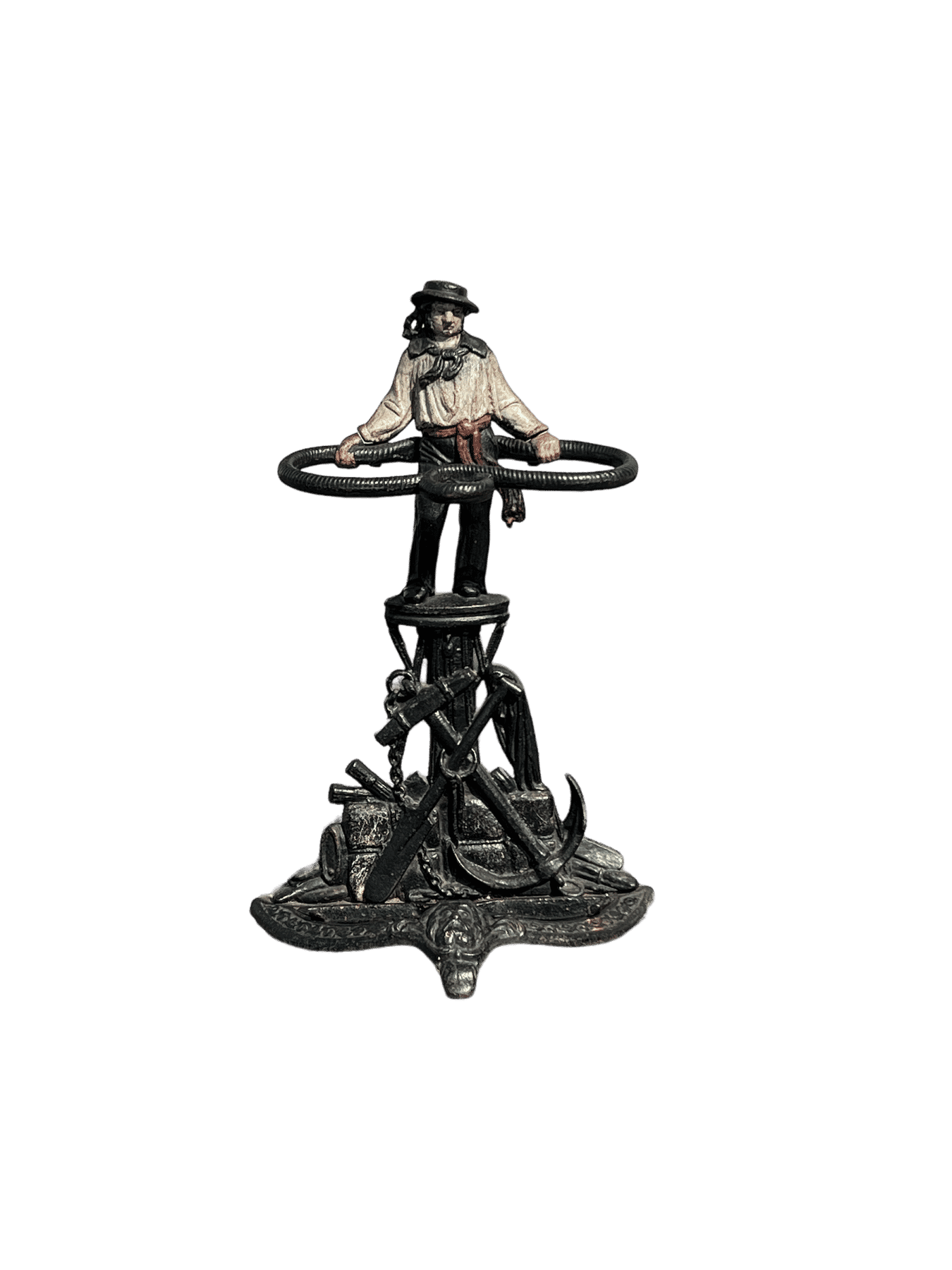

Ahoy! Moorabool has a definite Marine Theme for you to enjoy, with today’s Fresh Stock featuring the first of a series of interesting Nautical theme collections.
The fantastic umbrella & stick stand shown here sets the scene – a handy ‘Jack’ to have by the front door, handy with a rope which he uses to hold your umbrella and walking stick! He dates to the 1860’s , and is a fine example with original paint in good condition.
Why the curious name?
‘Jack Tar’ was the generic name for any sailor in the Georgian/Victorian era. ‘Jack’ was a place-keeper name for any wiring class man, the ‘John Smith’ of the day. The ‘Tar’ comes from the concept of a tarpaulin: literally a canvas sheet smeared with water-proofing tar, it was used on board all ships, and was turned into waterproof clothing by the sailors.
Early Australiana
Some very early Australiana, Fresh to our stock, relates to the early visits of the French to ‘Nouvelle Holland’, and includes an 1802 view of Sydney, printed in the 1807 publication on the Baudin Expedition.
Marine Art
Ships were essential for nearly every aspect of Australia’s development, from the very first European encounters to the gradual colonisation. Once established, they were the life-line to the rest of the world, and therefore are all represented in the world of Art & Antiques. We have an extensive collection of ‘Nautical Antiques’ to offer, starting with this selection.
-
 Victorian depiction of ‘Krakatoa’ at night, oil on milk glass panel, c. 1883$580.00 AUD
Victorian depiction of ‘Krakatoa’ at night, oil on milk glass panel, c. 1883$580.00 AUD -
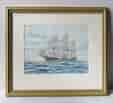 Warwick A. Andrews, “Dreadnought” clipper ship, 1973$265.00 AUD
Warwick A. Andrews, “Dreadnought” clipper ship, 1973$265.00 AUD -
 Warwick A. Andrews, ‘HMS Calliope’, oil on board 1971$395.00 AUD
Warwick A. Andrews, ‘HMS Calliope’, oil on board 1971$395.00 AUD -
 Warwick A. Andrews, ‘Diligente, Slaver outrunning the Patrol’, 1971$445.00 AUD
Warwick A. Andrews, ‘Diligente, Slaver outrunning the Patrol’, 1971$445.00 AUD -
 ‘Eden Holmes’ Australian Clippership, oil on card, c. 1900Sold
‘Eden Holmes’ Australian Clippership, oil on card, c. 1900Sold -
 Dorca Charles Sewell, ‘Inverneill’, watercolour c.1970Sold
Dorca Charles Sewell, ‘Inverneill’, watercolour c.1970Sold -
 Dorca Charles Sewell, ‘Port Natal, South Africa, 1879’ watercolour 1962$795.00 AUD
Dorca Charles Sewell, ‘Port Natal, South Africa, 1879’ watercolour 1962$795.00 AUD -
 Oil painting of a ship on rough seas, 19th/earlier 20th centurySold
Oil painting of a ship on rough seas, 19th/earlier 20th centurySold
Australian Marine Artists of the 20th century
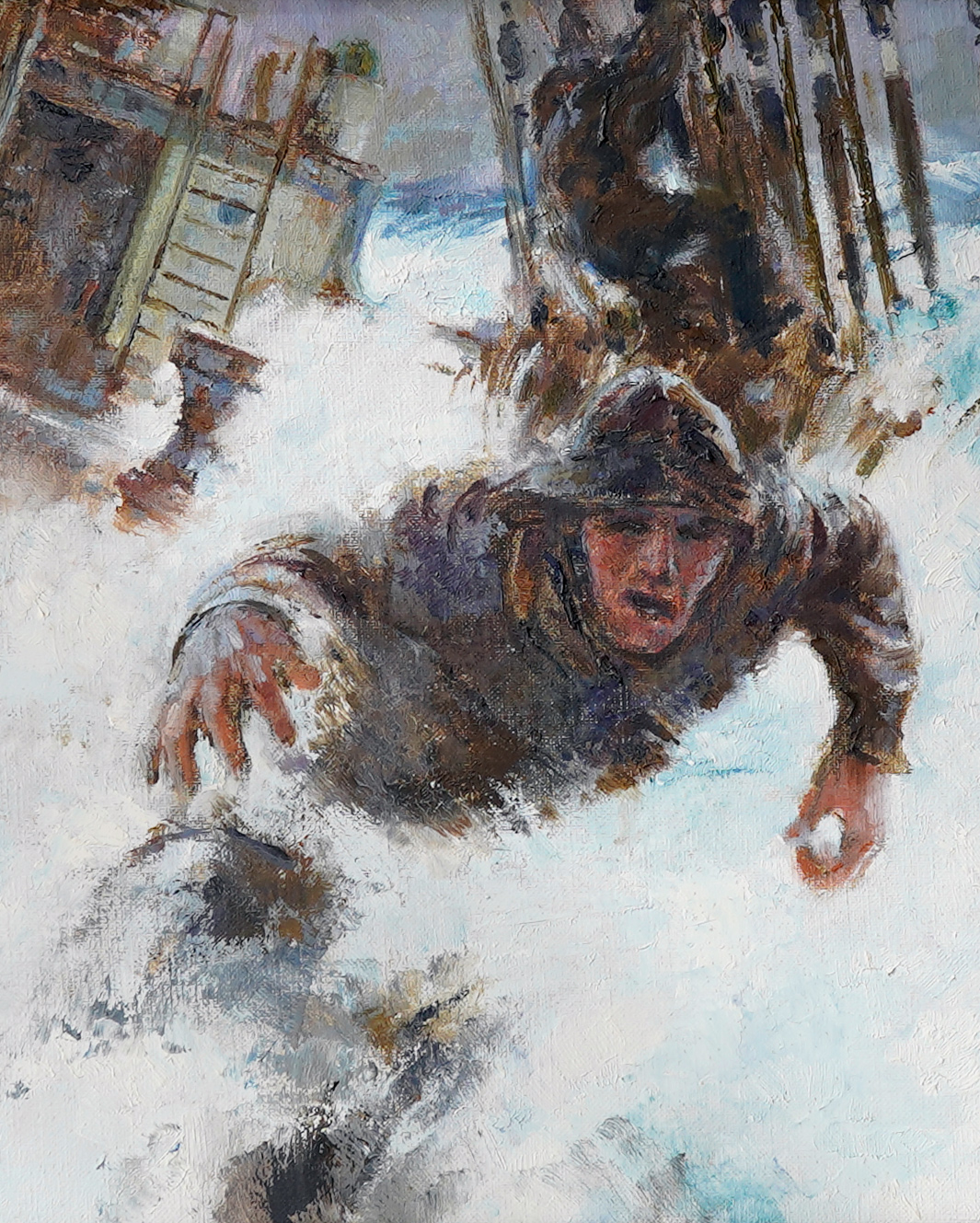
The nostalgia for the Age of Sail has always been strong, originating in the artists who were able to sail on the ‘Last of the Windjammers’ in the earlier 20th century, and continuing into the present.
One such sailor-artist was Dennis Adams, featured below. He managed to find a job on one of the few remaining commercial cargo ships, and left Australia in 1935, London-bound. He was able to paint his experiences for posterity, accurately depicting the life of a sailor from actual hands-on experience.
Dorca Charles Sewell (1907-79)
Dorca Charles Sewell was born in London, studied art in London & Paris, and became known for his marine art. He exhibited at the Royal Society of Marine Artists, the British Society of Artists, and the United Society of Artists in London. In around 1939, he migrated to Australia and found a job in the Public Service as an architect. He continued to paint, mostly watercolours, and exhibited in Sydney and Melbourne in the 1970’s.
Dennis Adams (1914-2001)
Dennis Adams was born in Sydney in 1914, where at the docks he watched the few remaining sailing ships pass Sydney Heads for distant ports. His father was a retired seaman, and his head was full of his tales of life on board the ‘Last of the Windjammers’. He studied art at the Julian Ashton Art School in Sydney, and in 1935 headed off to London to study at the Royal Academy of Arts on a sailing ship as a ‘seaman’. This voyage set the theme for his art: for the next 50 years, he painted dramatic scenes of the life of the sailor, not just the ships themselves. He was an official War artist during WWII, and his work in paint & in bronze sculpture is to be found in the Australian War Memorial in Canberra, as well as numerous other state memorials and galleries around Australia.
Warwick A Andrews (1930-2021)
Warwick Anthony Andrews was born in Sydney in 1930, and grew up to be a saltwater sailing enthusiast. He joined the Australian Navy Reserve, and later moved to Melbourne where he was involved with the Beaumaris Probus Club and the local arts scene. His works are often historical re-creations, using prints or old photos as a source which he ‘brought to life’ with his distinctive techniques in Oil and Watercolour.
A Krakatoa Curio
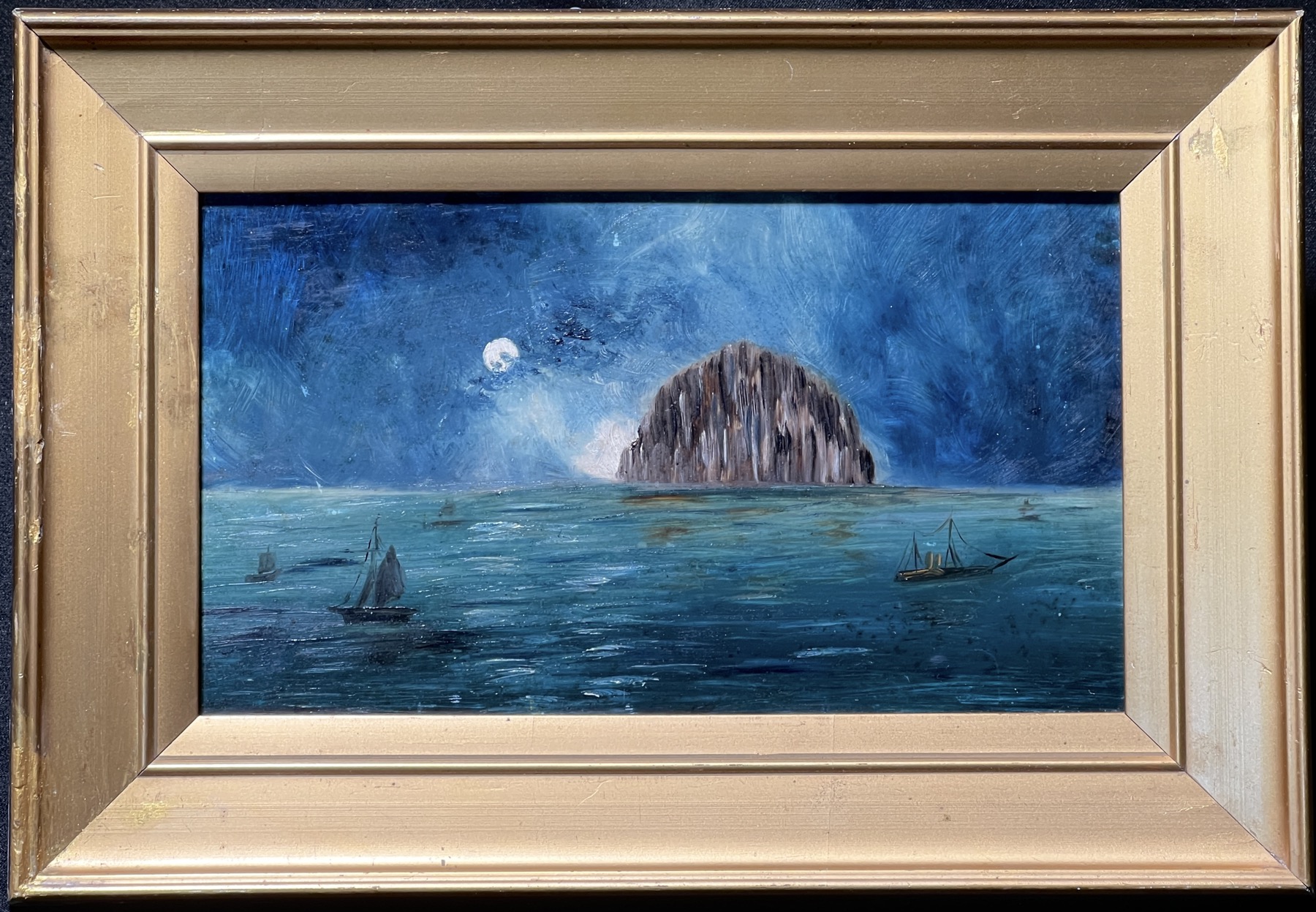
An unusual small Victorian oil painting (painted on a glass panel) depicts a strange, glowing mountain, with ships passing by apparently at nighttime.
We’ve interpreted this as a record of Krakatoa ‘before’ the catastrophic eruption of 1883, a most unusual record of a ship passenger, probably on their way to Australia.

Produced by ‘THE EASTERN EXTENSION TELEGRAPHIC COMPANY’ 1899. The printer, Waterlow & Sons, was the provider of stationary for the company, and produced these curios, shaped like a traditional Chinese or Japanese ‘page turner’, throughout the 1890’s.
The Ocean Liners & Wartime….
The advent of Steam, and internal combustion engines changed the face of sea travel forever. The reliability of a propulsion method that didn’t rely on the weather was gladly adapted, and sails rapidly disappeared in the first decades of the 20th century. Australia’s coastal trade was catered for by coastal steamers, and they became a regular sight often depicted in art of the period. One major change is the rise of the ‘Ocean Liner’ – entire ships built only to take passengers. During WWI, these were re-purposed as troop carriers – and many didn’t make it through.. the ‘SS Otway’ below being a prime example.

The SS Otway was almost brand-new when she was painted by the local amateur ship artist Glanville. Named for the famous cape in Victoria, Australia, which in turn was named in 1800 by Lieutenant James Grant after Vice-Admiral William Albany Otway, a Navy Captain from Nelson’s era. She was built & launched in Glasgow in 1909, an important part of the Orient Line’s fleet of 5 passenger ships that allowed weekly sailings to & from Australia. However, this did not last for long, as the tide of war swept ships such as this before it. Requisitioned by the Royal Navy in 1914, she became the HMS Otway, and once mounted with guns became an Armed Merchant Cruiser. Her service took her to colder climates, spending much of the following year patrolling off the north of England, around Iceland, and across to Norway. Her luck ran out on July 23rd, 1917, when she was torpedoed and sunk by a German u-boat with the loss of 10 lives.
The world’s Navies were also transformed, with mighty floating-fortress ships being seemingly impenetrable. The commemoratives for ‘H.M.A.S. SYDNEY (I) relate to one of Australia’s iconic stories; a light cruiser built in 1912, it was a formidable piece of technology in WWI which became a legend when it destroyed the German cruiser Emden in what is remembered as ‘Australia’s first victory at sea’.
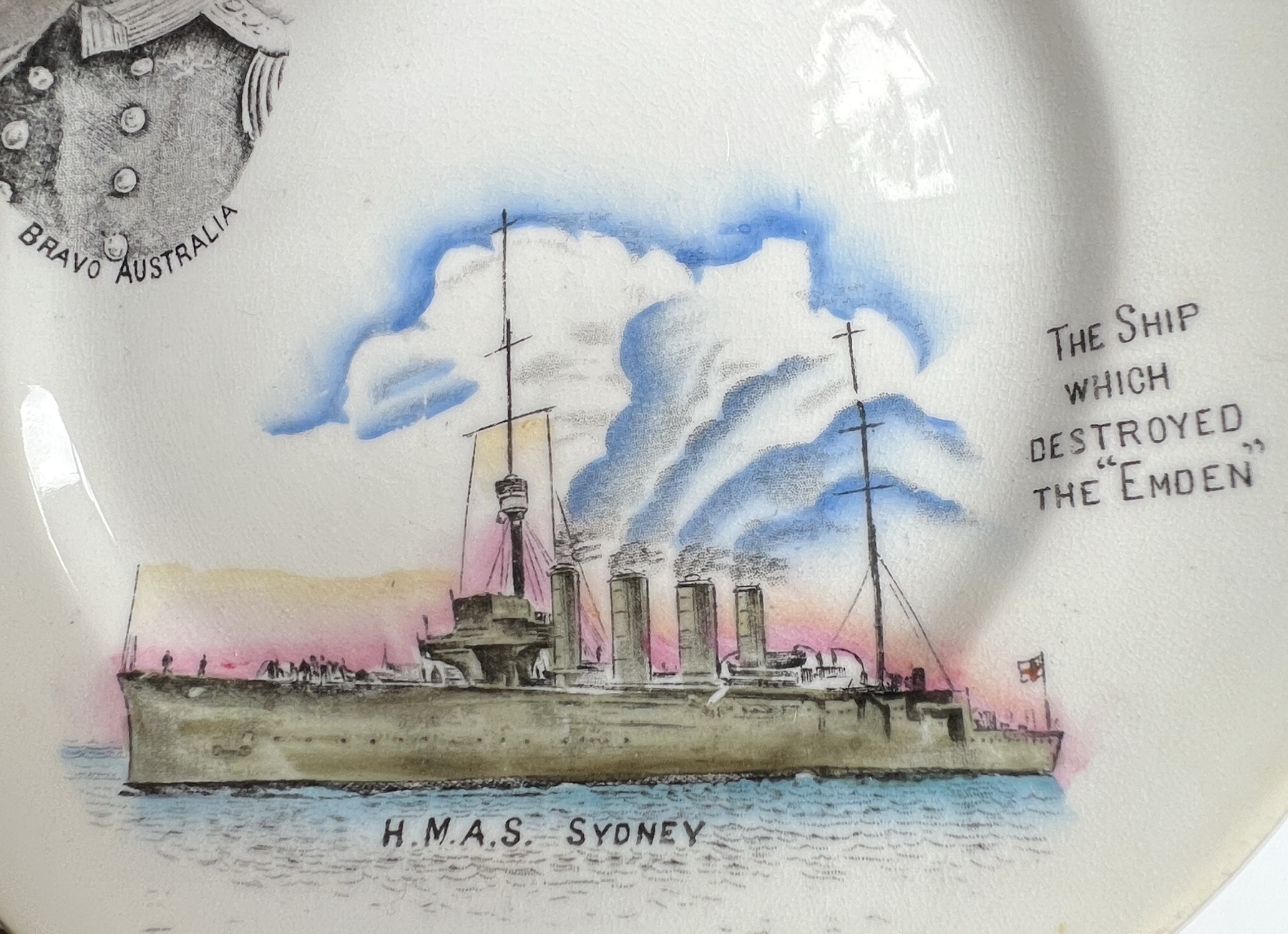
The German cruiser Emden had been sulking around South-East Asia causing major problems for the Allies, in a short time sinking or capturing 25 allied steamers, a Russian cruiser and a French destroyer. A dozen Allied warships were tied up in the region searching for a German battleship; the Germans had added an extra funnel to the Emden, and were masquerading as an Allied ship! Their next target was the station in the Cocos Islands, housing the all-important cable that connected the Pacific – and Australia- to Europe. On the 9th November, 1914, the Sydney came across the Emden as it closed in on the cable station, and successfully pounded it into submission. There’s a dramatic photograph taken by the staff of the Eastern Extension Telegraph Company (see the ‘page turner’ illustrated above!) on Direction Island watching the ships on the horizon battle it out, before they headed out to rescue survivors of the defeated Emden.
Note: There’s another ‘HMAS SYDNEY’ of great fame in WWII – recorded as the greatest loss in Australian Navy history, and a mystery until 2008 when the remains were discovered and her story re-constructed. But this is the second Navy ship with this name, ironically sharing a similar legendary status, although for polar-opposite reasons…..
-
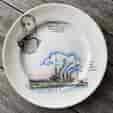 Paragon China Commemorative plate ‘H.M.A.S Sydney’ BRAVO AUSTRALIA WWI 1914Sold
Paragon China Commemorative plate ‘H.M.A.S Sydney’ BRAVO AUSTRALIA WWI 1914Sold -
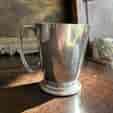 HMS Howe Nickel tankard, made from metal taken in 1958 scrapping, by Mappin & Webb$125.00 AUD
HMS Howe Nickel tankard, made from metal taken in 1958 scrapping, by Mappin & Webb$125.00 AUD -
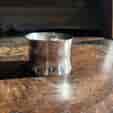 Silver plate Napkin ring, ‘H.M.A.S SYDNEY’, copper with incised name, c. 1920Sold
Silver plate Napkin ring, ‘H.M.A.S SYDNEY’, copper with incised name, c. 1920Sold -
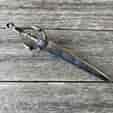 Australiana ship souvenir anchor letter opener, “SOUVENIR OF M.V.KANIMBLA”, mid-20th century$95.00 AUD
Australiana ship souvenir anchor letter opener, “SOUVENIR OF M.V.KANIMBLA”, mid-20th century$95.00 AUD -
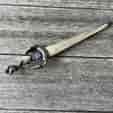 Australiana ship souvenir anchor letter opener, “S.S.ORCADES”, mid-20th century$95.00 AUD
Australiana ship souvenir anchor letter opener, “S.S.ORCADES”, mid-20th century$95.00 AUD -
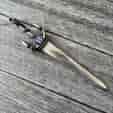 Australiana ship souvenir anchor paperknife, “S.S. ORONTES”, mid-20th centurySold
Australiana ship souvenir anchor paperknife, “S.S. ORONTES”, mid-20th centurySold -
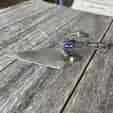 Australiana souvenir fouled anchor ‘trowel’, “M.V. DUNTROON”, mid-20th century$95.00 AUD
Australiana souvenir fouled anchor ‘trowel’, “M.V. DUNTROON”, mid-20th century$95.00 AUD -
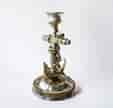 Interesting Nautical ‘Anchor’ candlestick, brass with silver-plate, c. 1910$395.00 AUD
Interesting Nautical ‘Anchor’ candlestick, brass with silver-plate, c. 1910$395.00 AUD -
 James Ashton (1859-1935) watercolour, Coastal scene with steamer, c. 1920$440.00 AUD
James Ashton (1859-1935) watercolour, Coastal scene with steamer, c. 1920$440.00 AUD -
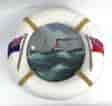 Coastal steamer, Australian oil painting, C. 1910$580.00 AUD
Coastal steamer, Australian oil painting, C. 1910$580.00 AUD -
 G Glanville, SS Otway – Orient Line – watercolour dated 1910$950.00 AUD
G Glanville, SS Otway – Orient Line – watercolour dated 1910$950.00 AUD -
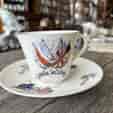 Crown Chelsea cup + Saucer, HMAS SYDNEY Cocos Battle Commemorative 1914Sold
Crown Chelsea cup + Saucer, HMAS SYDNEY Cocos Battle Commemorative 1914Sold
‘General’ Fresh Stock:
-
Product on sale
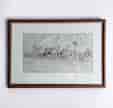 Kenneth Jack, ink sketch – General Store, Post Office, Church, + Garage, Swan Reach, Victoria 1964$650.00 AUD
Kenneth Jack, ink sketch – General Store, Post Office, Church, + Garage, Swan Reach, Victoria 1964$650.00 AUD -
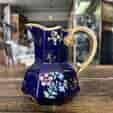 Spode porcelain blue jug, lizard handle, c.1820$340.00 AUD
Spode porcelain blue jug, lizard handle, c.1820$340.00 AUD -
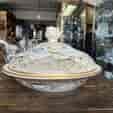 Bloor Derby covered dish, with large floral specimens surrounded by grey and gilt scroll border, circa 1835$295.00 AUD
Bloor Derby covered dish, with large floral specimens surrounded by grey and gilt scroll border, circa 1835$295.00 AUD -
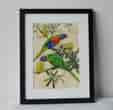 Rainbow Lorikeets in Banksia, gauche by Edward Bell 1969$295.00 AUD
Rainbow Lorikeets in Banksia, gauche by Edward Bell 1969$295.00 AUD -
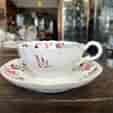 Hicks, Meigh +Johnson cup +saucer, tulips and roses, C. 1830-5$280.00 AUD
Hicks, Meigh +Johnson cup +saucer, tulips and roses, C. 1830-5$280.00 AUD -
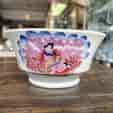 English porcelain bowl, ‘Disarming Cupid’ lustre decoration, C.1810$145.00 AUD
English porcelain bowl, ‘Disarming Cupid’ lustre decoration, C.1810$145.00 AUD
Coming Soon….
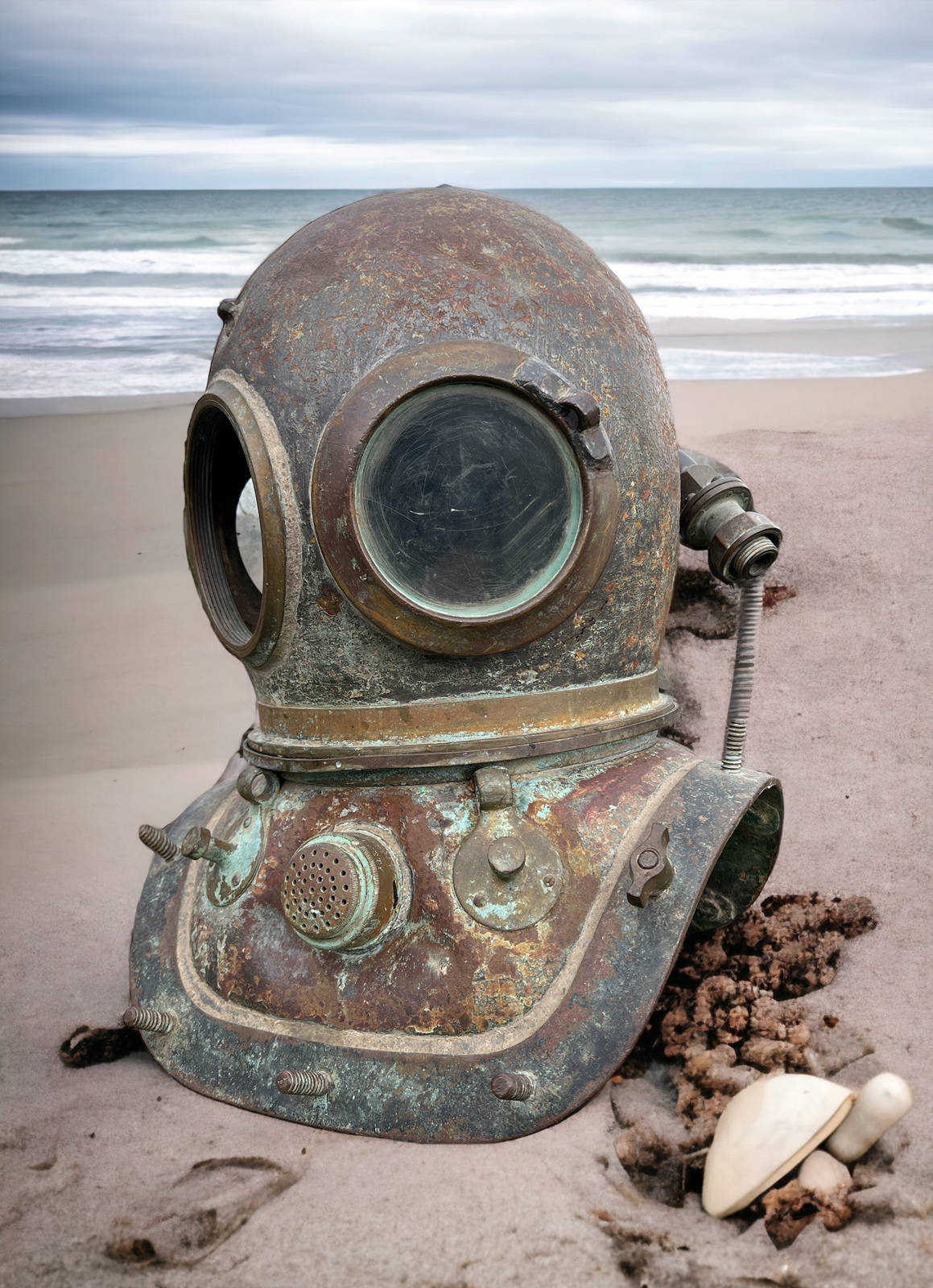
There’s a ship-load of Nautical items on the horizon…
Including this amazing original early 20th century diving helmet: the front glass element is missing, I’m sure there’s a fantastic story about how that happened….?
We have some early English rarities coming, including this somewhat controversial ‘Pope & Devil’ stirrup cup. These were used in the classic British Hunt, for a quick dash of rum before heading off on horseback to chase whatever was trying to escape: the devil-side rip holds the drink, the pope simply cannot!
Dating to around 1790, it’s a fine example of Pratt high-fired pottery.
